Contents
- Ambadevi Mandir
- Astamasiddhi Mahanubhav Mandir
- Bebah Bagh
- Bhimkund
- Datta Mandir
- Devi Point
- Gavilgarh Fort
- Hauz Katora
- Hinglaj Devi Mandir
- Jaisingh Baba Mandir
- Legacy and Modern Influence
- Mahimapur Chi Vihir
- Cultural & Historical Significance
- Conservation Efforts
- Mandal Shah
- Ram Mandir Sansthan
- Sant Gadge Baba Samadhi Mandir
- Shri Adinath Swami Digambar Jain Atishaya Kshetra
- Shri Jagdamba Devi Mandir
- Sources
AMRAVATI
Cultural Sites
Last updated on 5 November 2025. Help us improve the information on this page by clicking on suggest edits or writing to us.
Ambadevi Mandir
Ambadevi Mandir, located in Amravati City, is one of the oldest and perhaps most prominent places of worship in the district. The mandir is dedicated to Ambadevi, an incarnation of the goddess Durga, who is considered by many locals to be the gram devi of the city. Such is its significance that some believe the district’s name derives from the mandir itself.
The origins of the mandir are linked to an intriguing lore that traces its roots to a prosperous, historically significant, yet mysterious era in Amravati’s past. The lore is tied to the legendary Vidarbha Kingdom, which as many scholars point out, finds its mentions in ancient Hindu scriptures such as the Puranas and the epic Mahabharat. In the first English translation of the Mahabharat by Kisari Mohan Ganguli (1896), the kingdom’s location is described as such, “this road leadeth to the country of the Vidarbhas– and that, to the country of the Kosalas. Beyond these roads to the south is the southern country.”
The legend of Ambadevi Mandir centers around the reign of King Rukmin of Vidarbha and the story of his sister Rukmini and Bhagwan Krishna. Rukmini was betrothed to Sisupal, king of Chedi, but her heart yearned for Krishna. Defying her brother’s authority, Rukmini eloped with Krishna, and according to local tradition, their wedding took place at this very mandir, making it the site of their divine union.

The story of this divine union remains significant in contemporary life, with locals traditionally seeking blessings at the mandir before significant life events, particularly marriages.
Astamasiddhi Mahanubhav Mandir
Astamasiddhi Devasthan is a religious site situated in Achalpur. The site is significant to the Mahanubhav sect, a Krishnaite denomination of Hinduism, as it houses two Charanankit sthans (holy footprints) attributed to the sect’s founder, Sarvadnya Shri Chakradhar Swami, and one of its gurus, Shri Govind Prabhu. According to a local legend, Sarvadnya Shri Chakradhar Swami stayed at this location for three nights before traveling to Achalpur at the invitation of Raja Ramdarna.
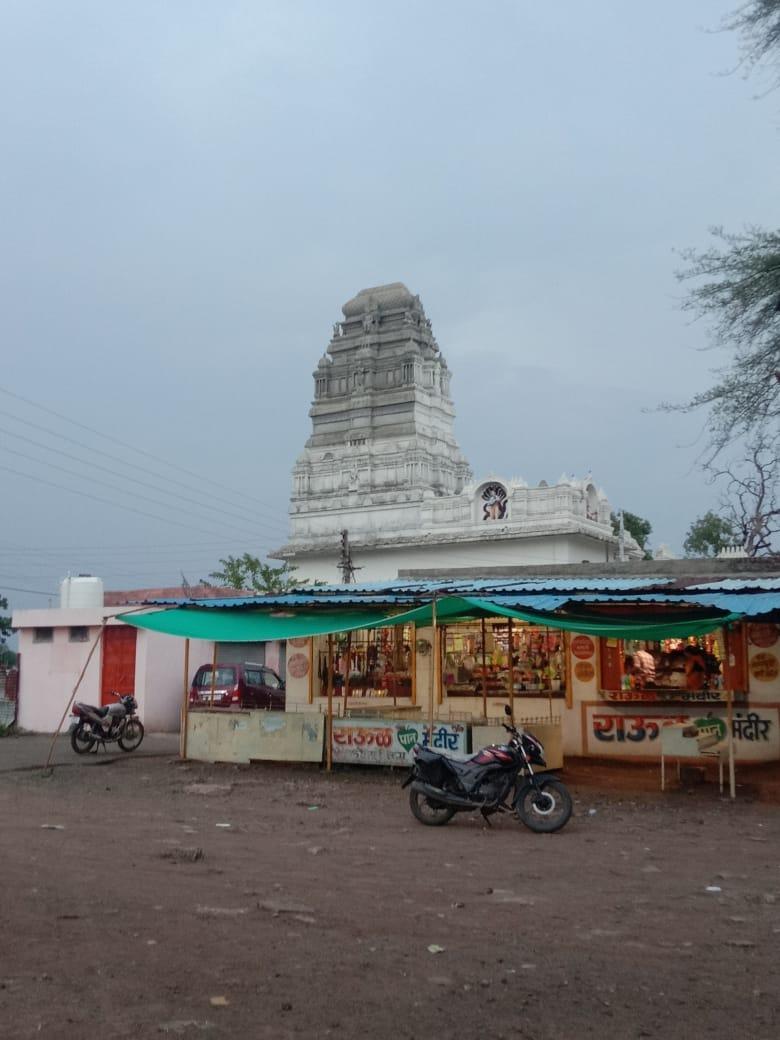
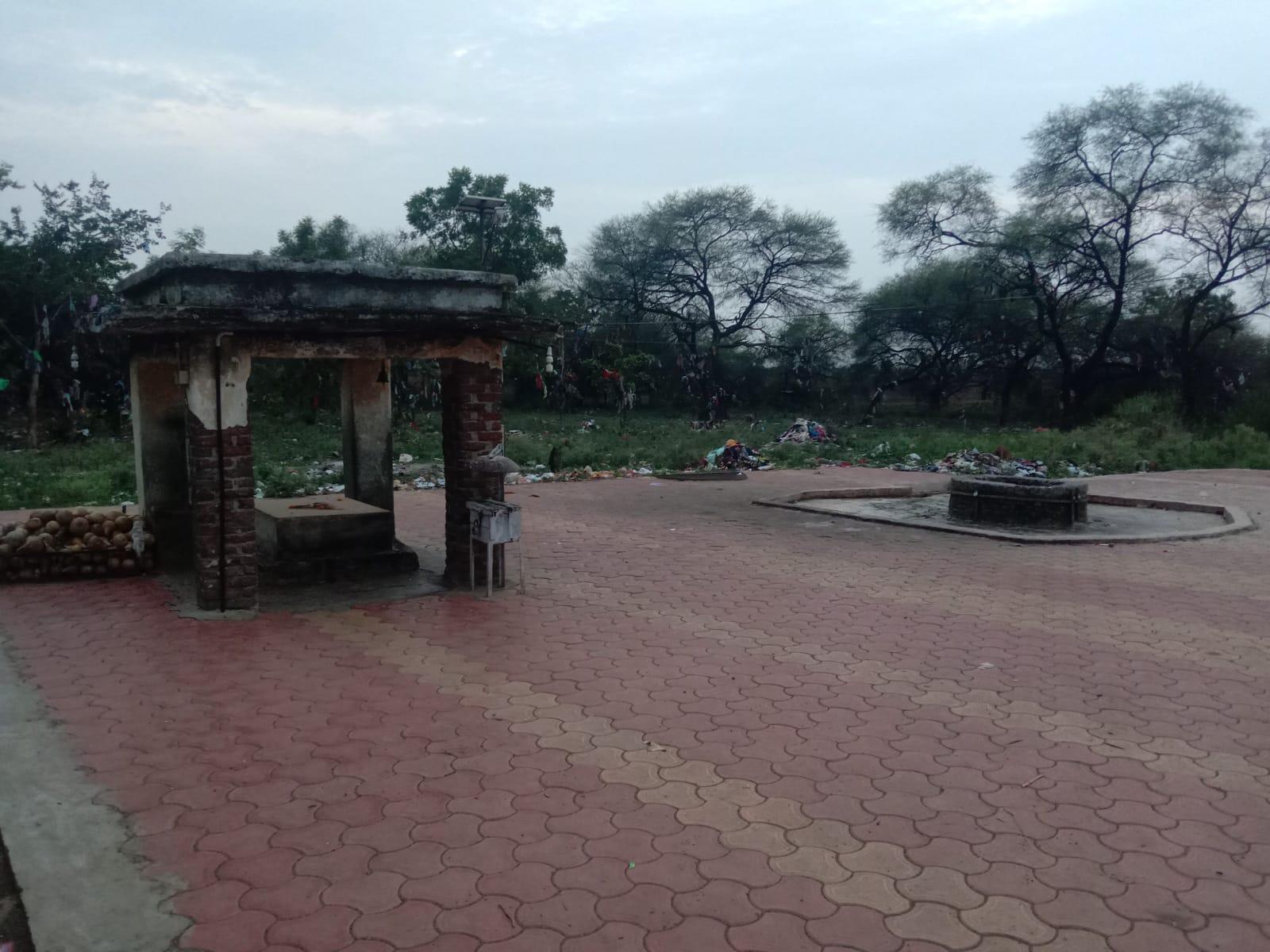
The mandir derives its name from a historic well believed to contain healing properties. Local tradition holds that the well's water, considered blessed by Parmeshwar, has curative properties, particularly for children’s ailments. The site draws devotees from across the Vidarbha region, with notable gatherings on Tuesdays and Fridays.
Bebah Bagh
Bebah Bagh (Shahi Qabristan) is a historic royal cemetery in Achalpur’s Sarmaspura area, which is located around two km away from Hauz Katora. Constructed during the Nizam Shahi period approximately 250 years ago, the site served as a burial ground for Nawabs before being transformed into a landscaped garden, from which it perhaps derives its current name.
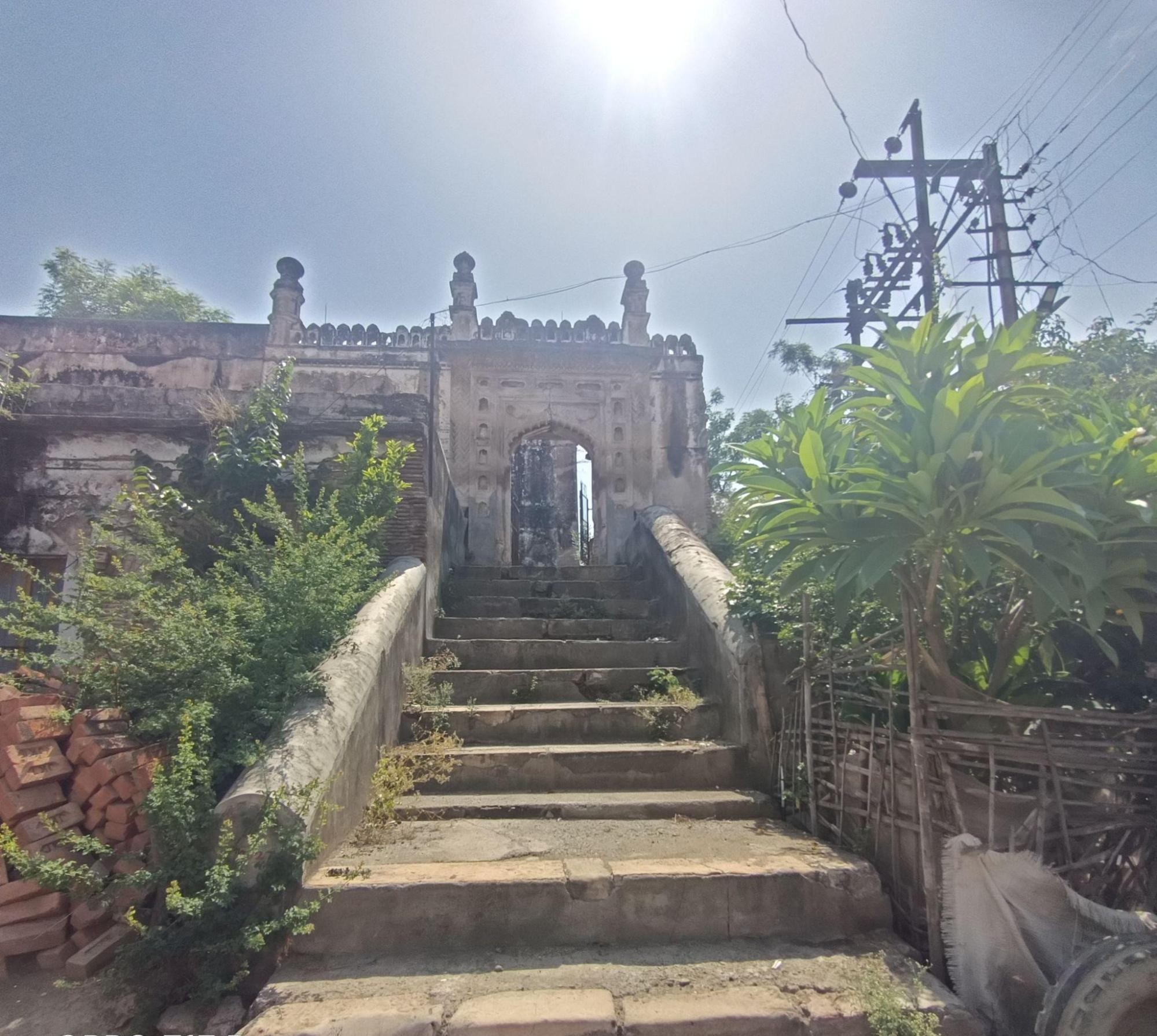

The site features intricate stone carvings, latticed windows, and arched doorways that display Persian architectural influences. The finely crafted tombs within Bebah Bagh offer insights into the Nizam Shahi dynasty’s burial practices, adding to the site’s historic and cultural value.
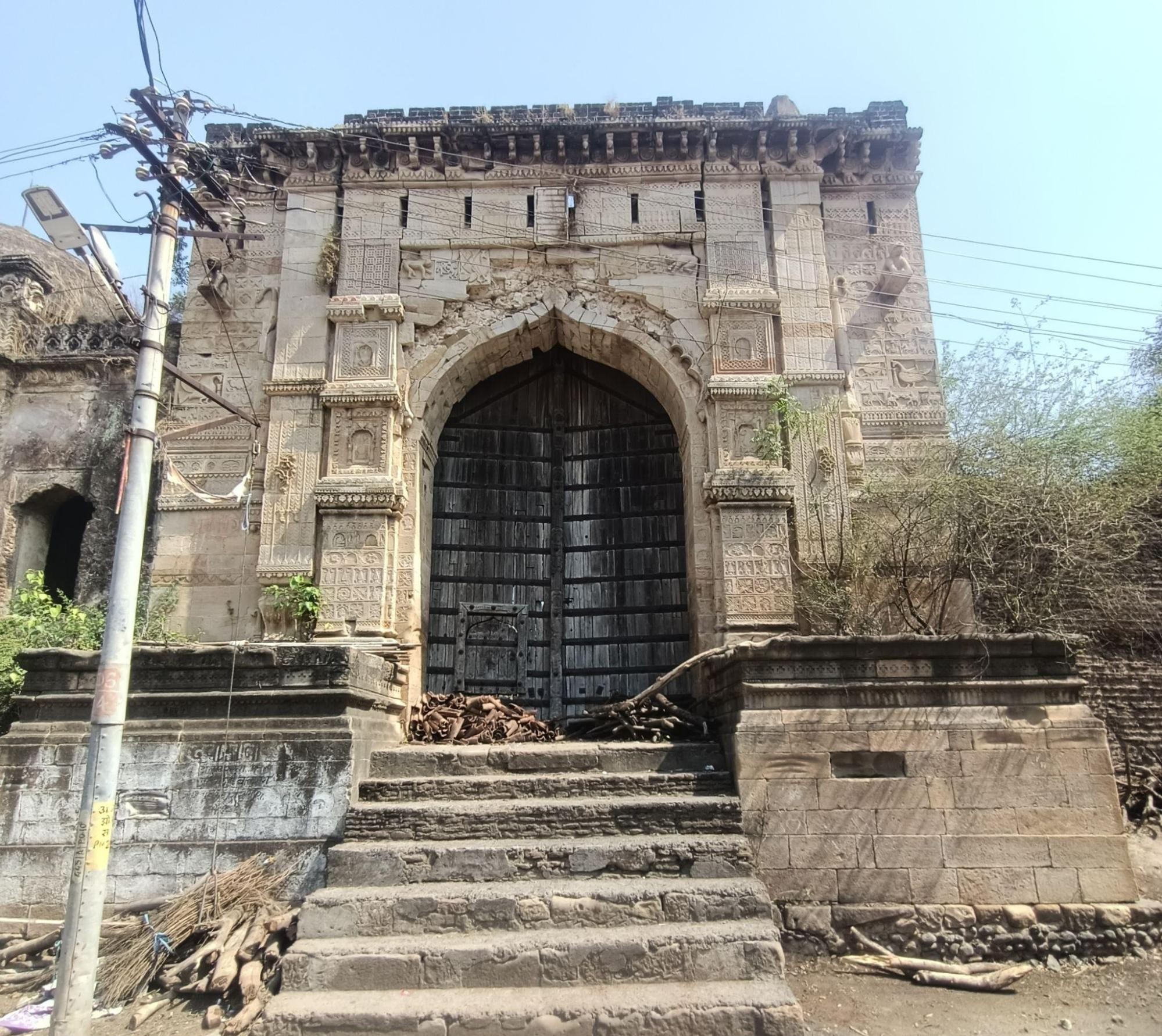
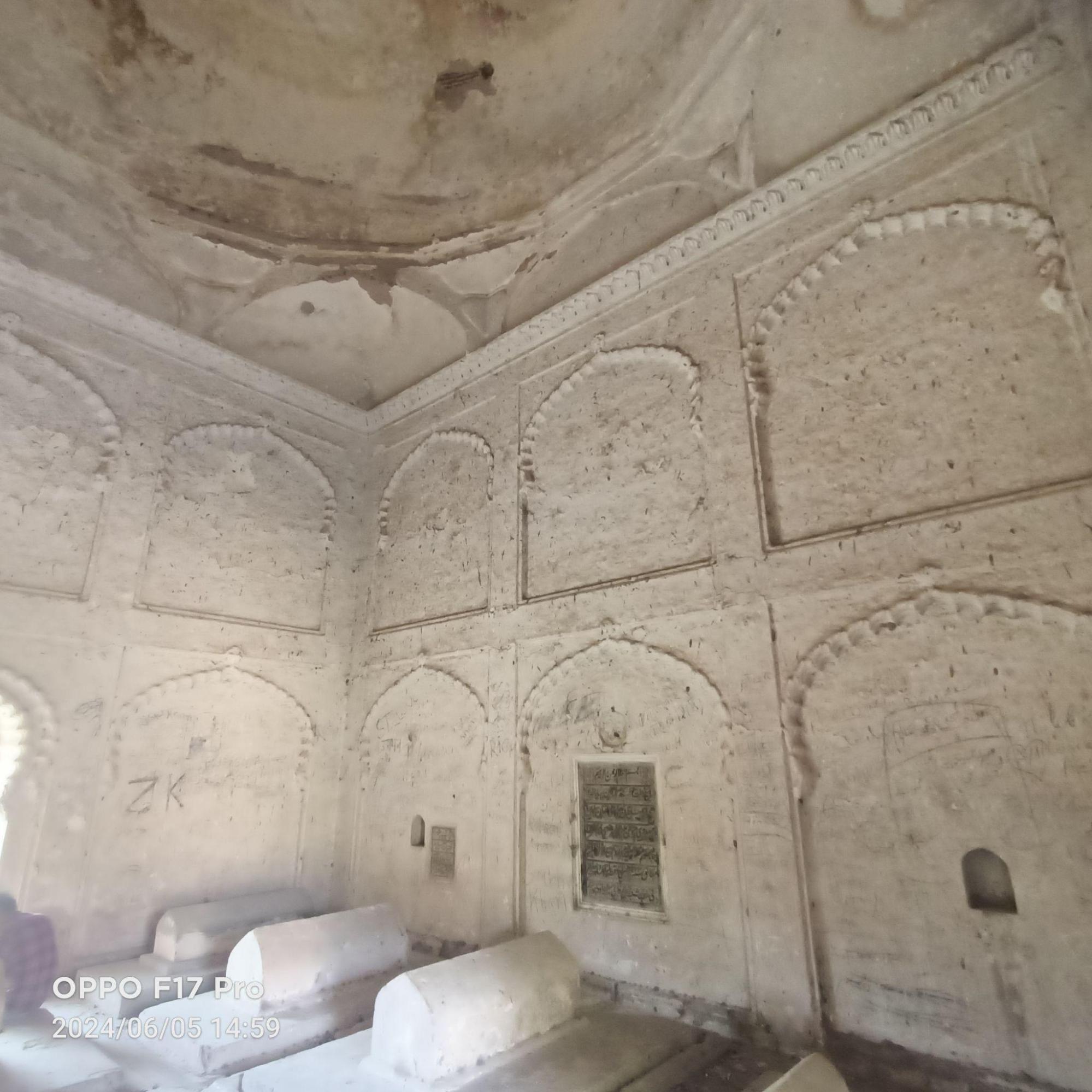


Currently, Bebah Bagh is privately owned by a Nawab. While the site retains many of its original architectural elements, the historic garden has transformed considerably over time. Local residents have observed changes in the site’s usage, with the grounds now serving as a gathering space for various activities, including gambling and card games.
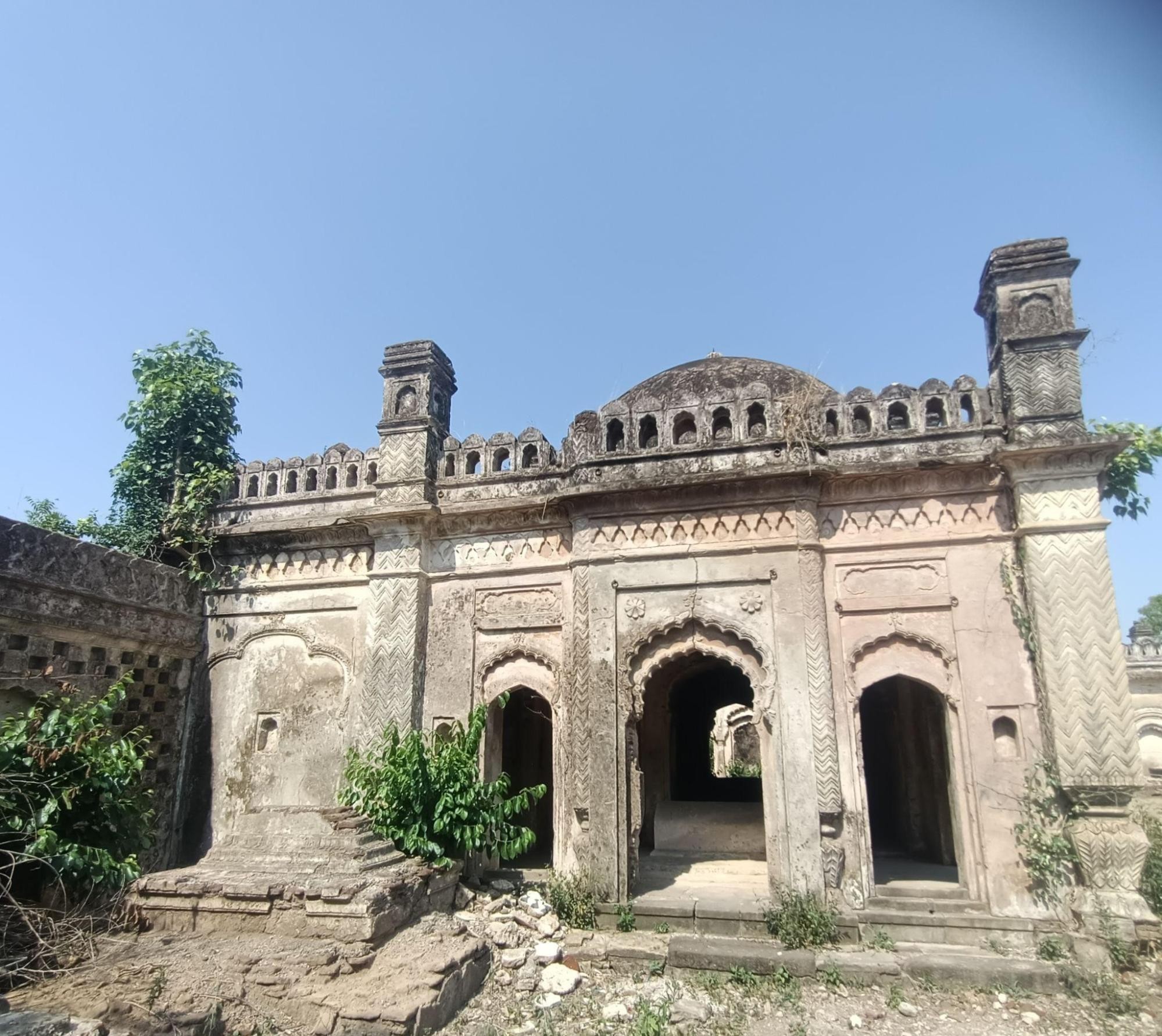

Many local residents have expressed their wish for the preservation of this historic structure and its garden, expressing concerns about its current condition and use. Their voices emphasize the need to protect this significant piece of cultural heritage for future generations.
Bhimkund
Amravati is a region where several sites are believed to be connected to events or figures from the epic Mahabharat. One such site is Bhimkund, also known as Neelkund and locally referred to as Keechakdara. It is a natural water spring located approximately one and a half km from the town of Chikhaldara.
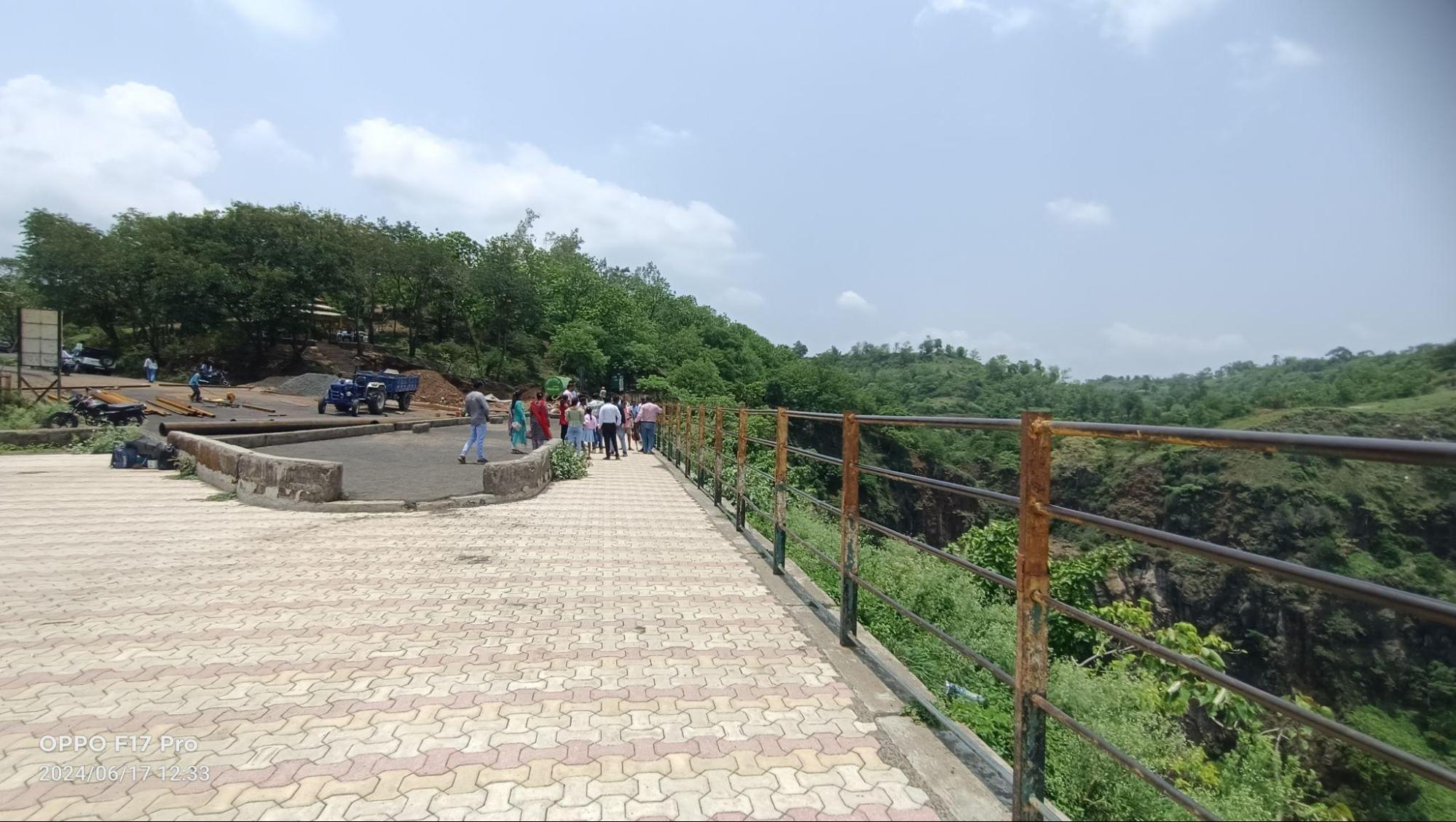
The spring is situated at the beginning of a valley that plunges nearly 3,500 ft. Its waters are known for their deep indigo-blue color. It is said to be so clear that visitors can observe the aquatic life within it.
According to a local legend, Bhima, one of the Pandavas from the Mahabharat, confronted and killed a rakshas (demon) named Keechak at this very site. The legend holds that Bhima washed his hands in the waters of the spring after the battle. While some traditions suggest that the waters were sacred prior to this event, others associate the spring’s sanctity with this act of purification by Bhima. Notably, the name “Keechakdara” is often believed to be the origin of the name for the nearby town of Chikhaldara. An alternative explanation for the name’s origin links it to the Marathi and Hindi words “kichak” and “chikhal,” meaning “mud,” which might come from the region’s swampy terrain.
Datta Mandir
Datta Mandir, located in Sultanpura, is a historic mandir known for its labyrinthine architecture, earning it the local name “Bhool Bhulaiya” (maze temple). The mandir’s complex network of interconnecting pathways guides visitors to multiple shrines dedicated to various devis and devats such as Ganesh, Shiv, Ram-Sita, and more. It also houses shrines honoring revered saints such as Sant Namdev, Gajanan Maharaj, and Dnyaneshwar Maharaj.
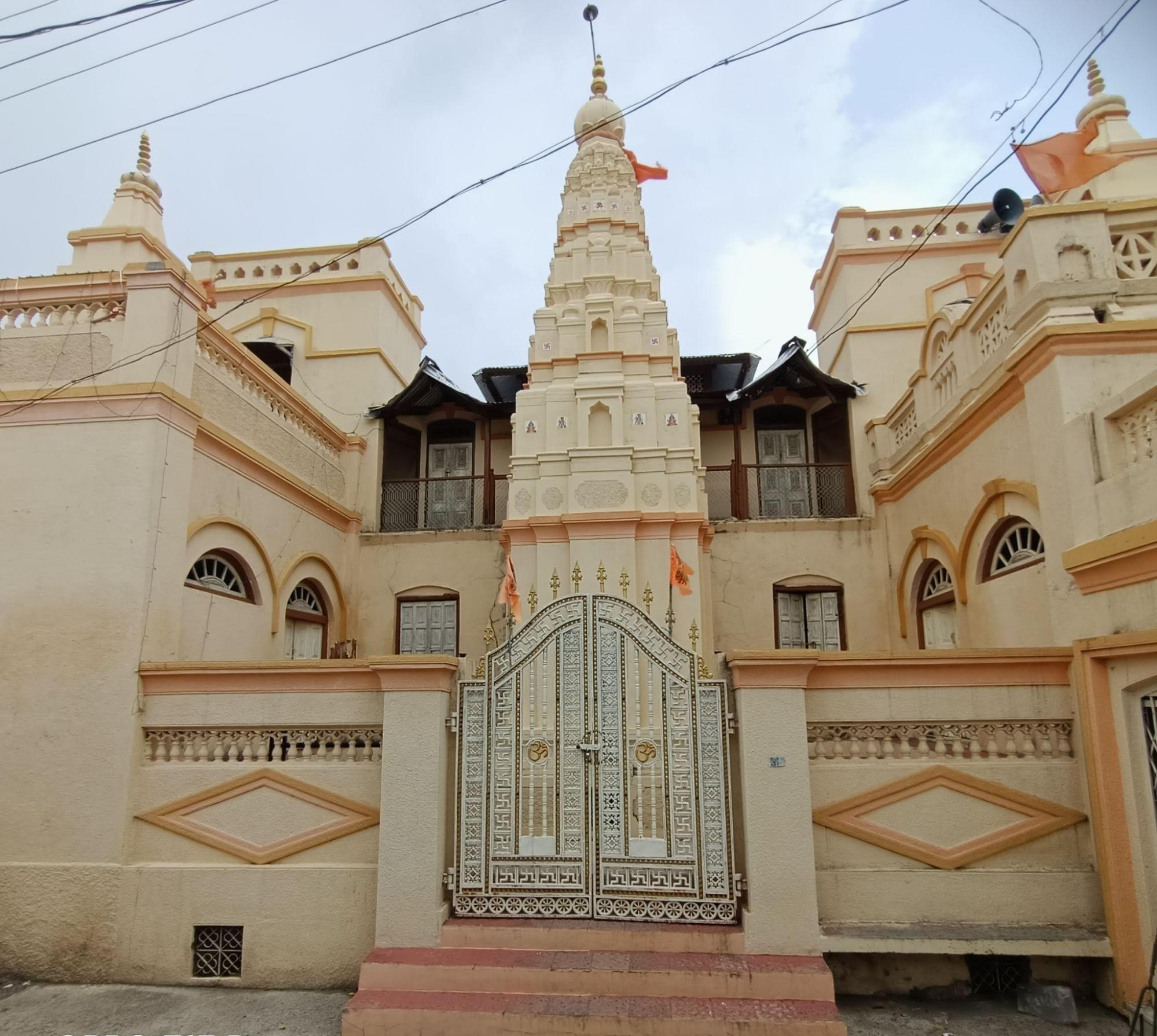

The mandir’s interior features ancient paintings and sculptures that reflect its religious and cultural significance. A notable artifact within the mandir is a century-spanning calendar that covers the years 1923 to 2023, which documents its historical timeline.
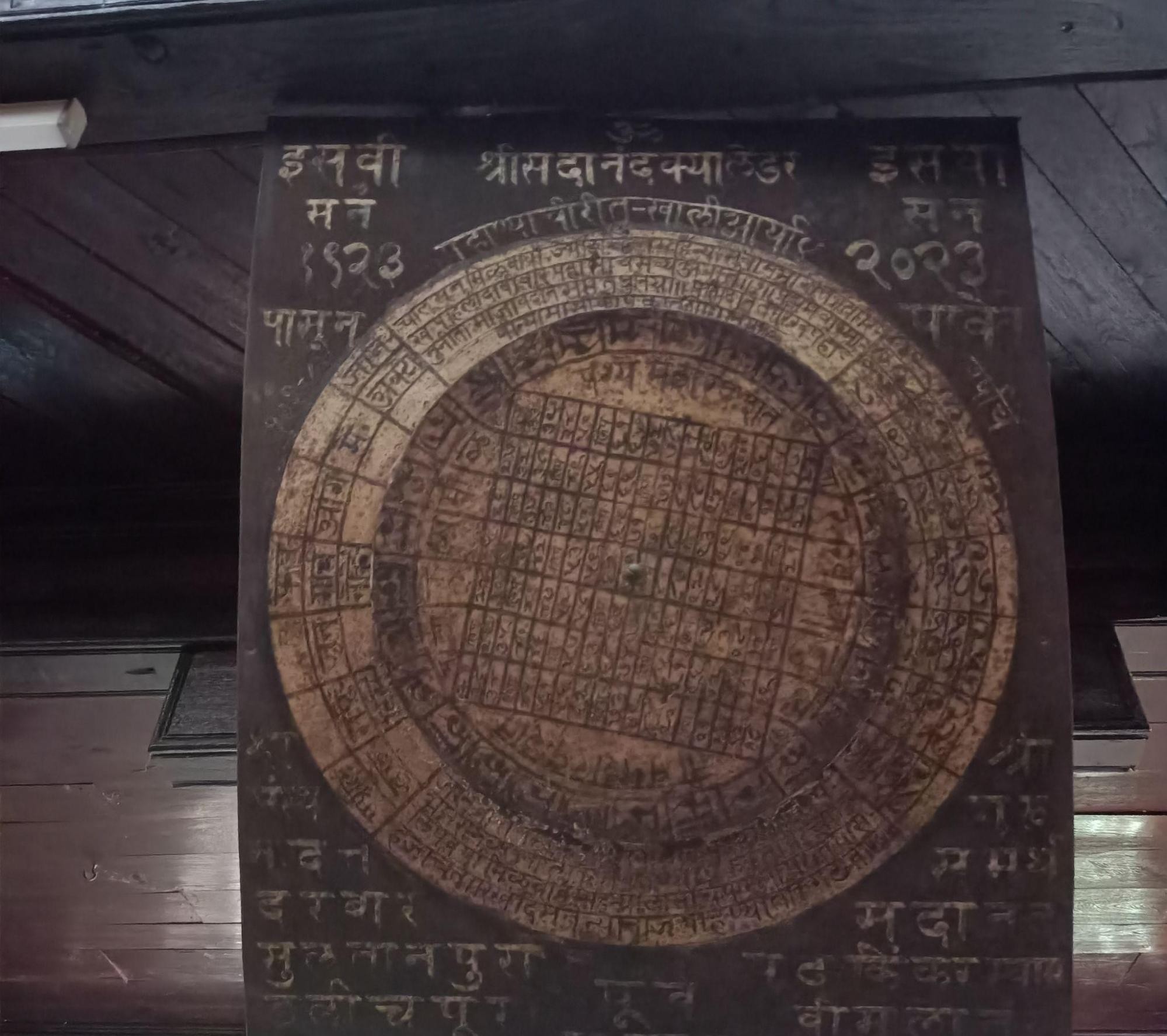
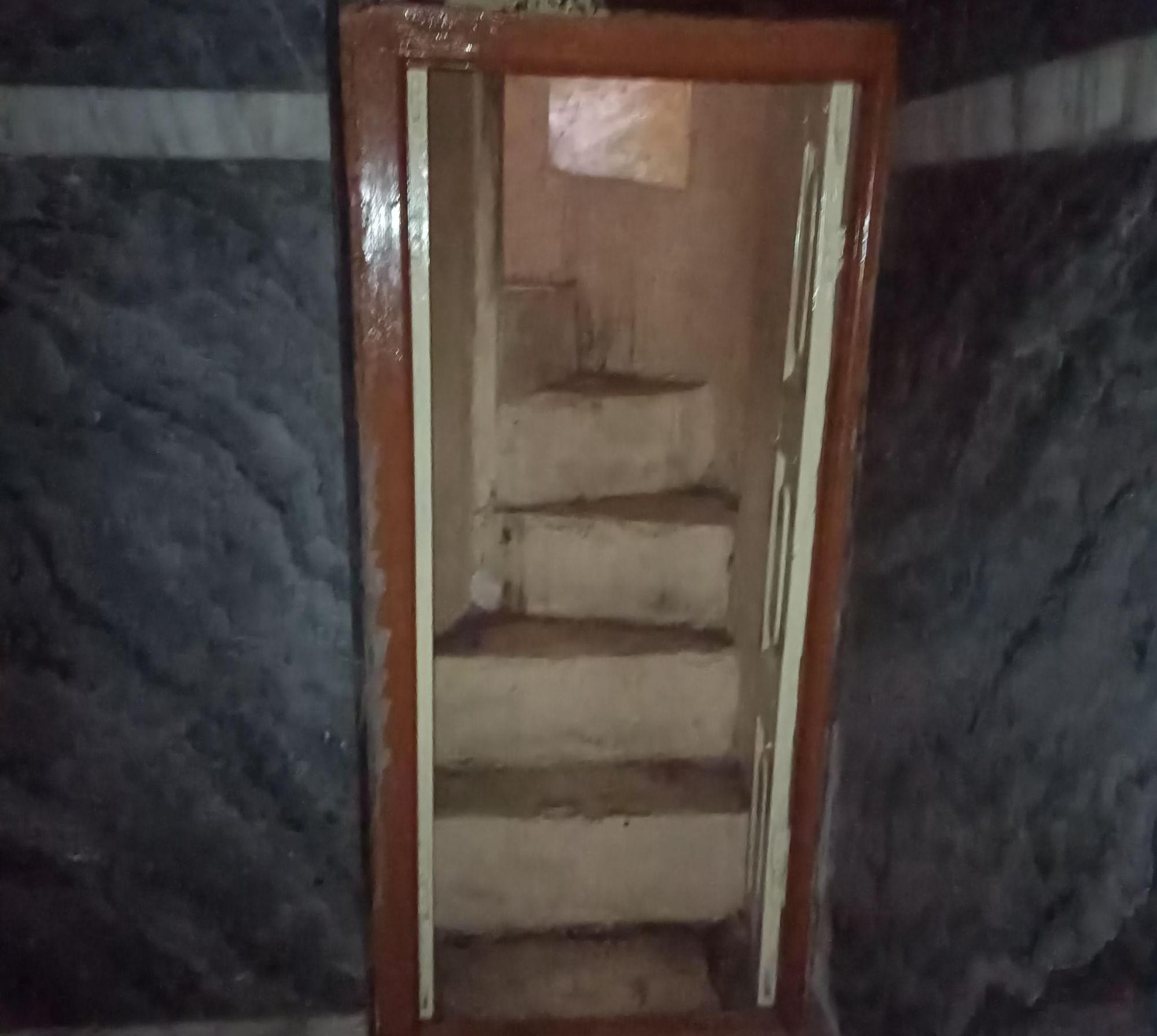
Devi Point
Devi Point is a hilltop and tourist spot located in the Chikhaldara region of Amravati. The viewpoint offers panoramic views of the surrounding Melghat Sanctuary, a protected forest area known for its biodiversity.
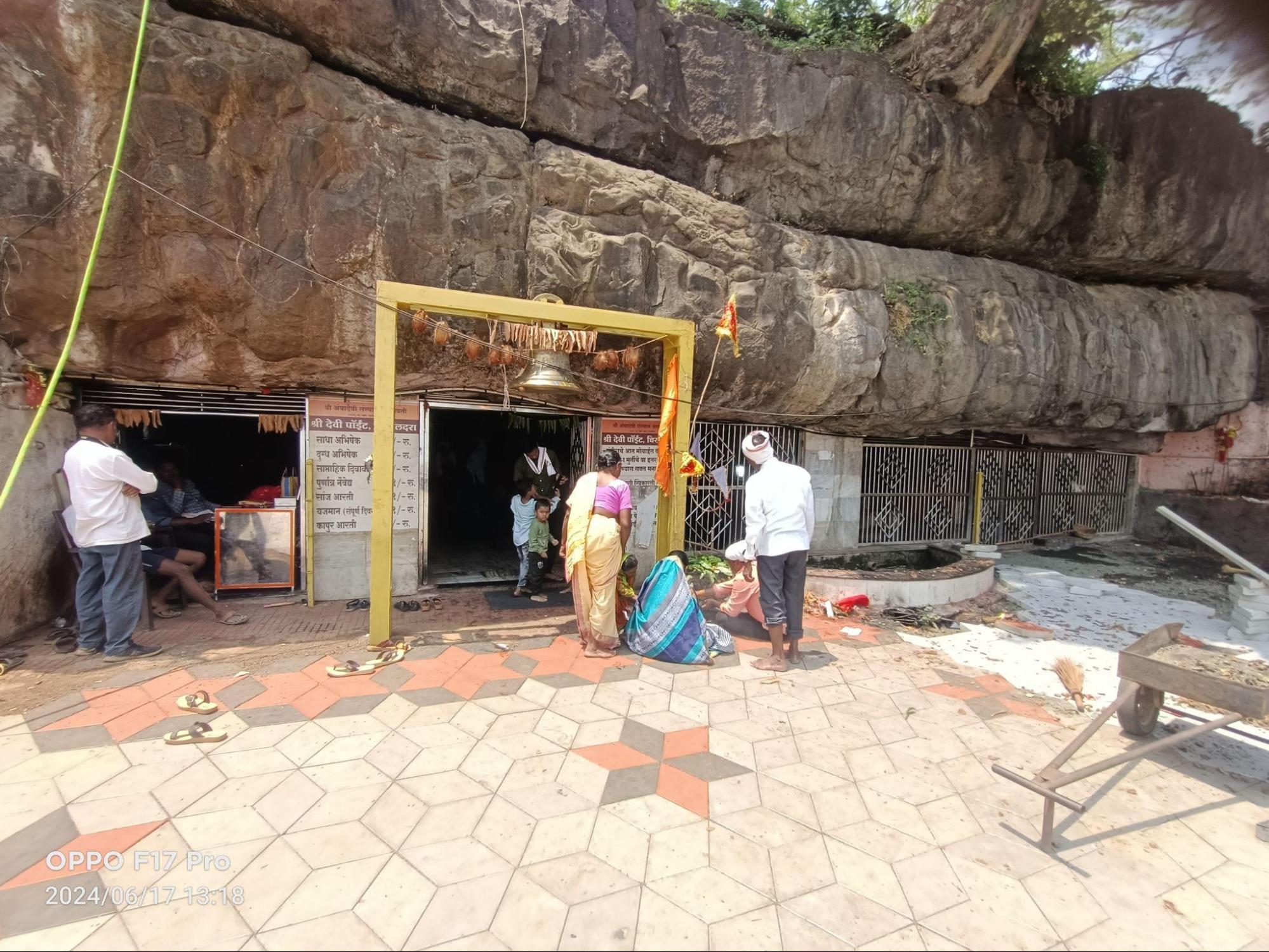
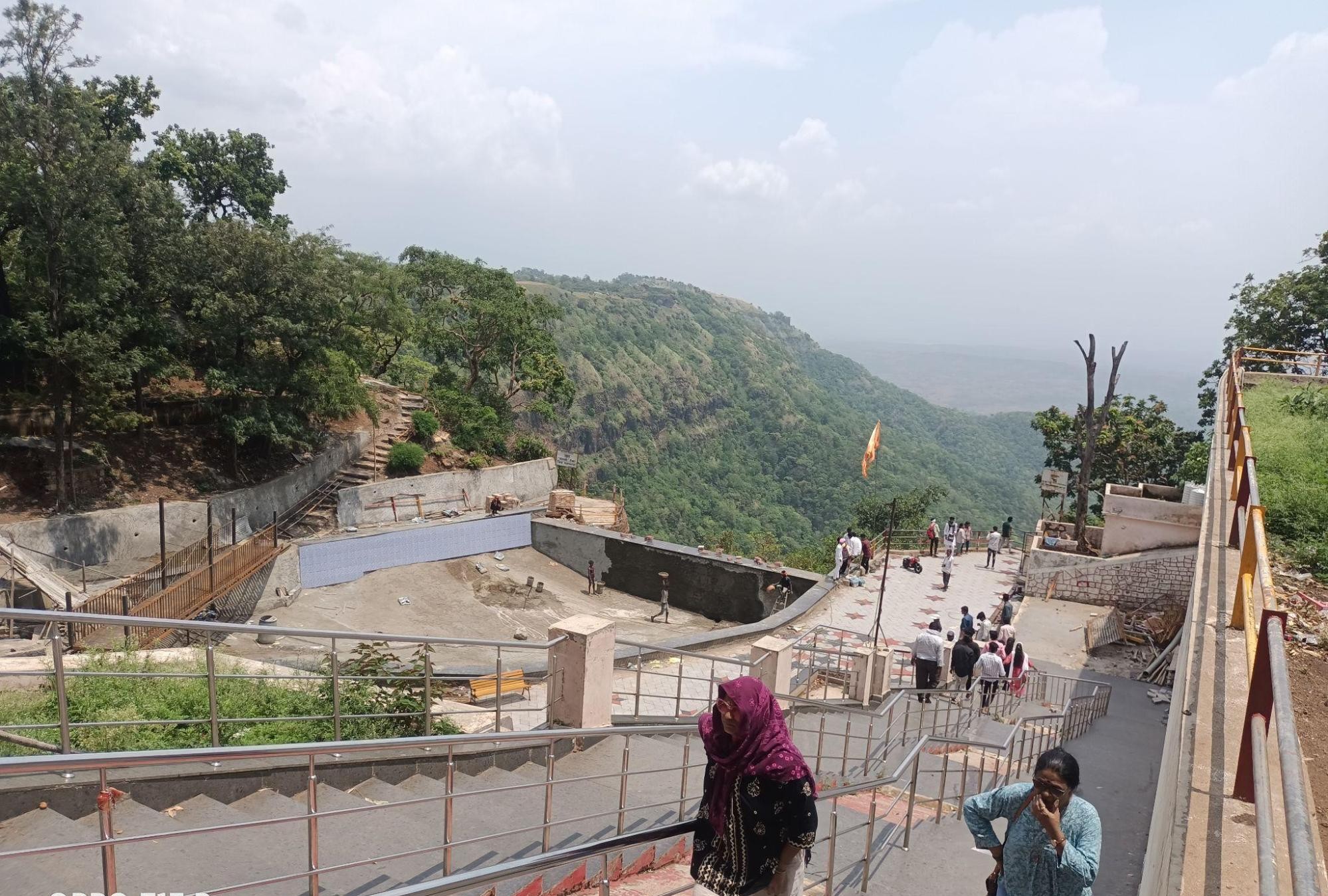
The hilltop at Devi Point is named after a local Devi whose mandir is situated amidst the rock formations at the summit. While not much is known about this mandir, locals say that it has been a yatra site for generations.


The viewpoint is situated 2 km from Chikhaldara bus stand and is accessible via the Amravati-Chikhaldara state transport bus service. Local taxis and auto rickshaws are also available for those seeking a more direct route to the site.
Gavilgarh Fort
Gavilgarh Fort (Gavilgad), situated atop a hill near the Melghat Tiger Reserve in Amravati, is a historic fortress estimated to be around 300 years old. The fort’s strategic importance is captured in the ancient saying, “He who held Gavilgad, held Berar.”

The fort is traditionally believed to have been built by the Gavlis, a community of shepherd rulers, in the 12th or 13th century. According to the district Gazetteer (1911), the name “Gavilgarh” is said to be derived from the Gavlis, who once inhabited the fort. It is believed to have been abandoned by this community before coming under the control of the Gond dynasty. Later, in the 15th century, Gavilgad was fortified by Ahmad Shahavali, the ninth ruler of the Bahmani Empire, a development that the Gazetteer notes was documented by the Persian historian Ferishta. Over time, the fort passed into the hands of several rulers, including the Mughals and the Marathas. According to a local lore, Chhatrapati Shivaji Maharaj, in particular, is said to have used the fort to monitor the movements of Mughal forces.
The Archaeological Survey of India currently maintains Gavilgarh Fort as a protected monument within the Melghat Tiger Reserve. Access to the inner fort is restricted, with unauthorized entry subject to a huge fine.
Hauz Katora
Hauz Katora is a 16th-century octagonal tower which lies in a remote area along the Bhilona Road of Achalpur. The structure is believed to have been constructed during the reign of the Imad Shahi dynasty (1490–1574 CE). Interestingly, it is said that the tower, rising around 80 ft. from what was once a 300-foot-wide lake, may have served as a summer retreat.
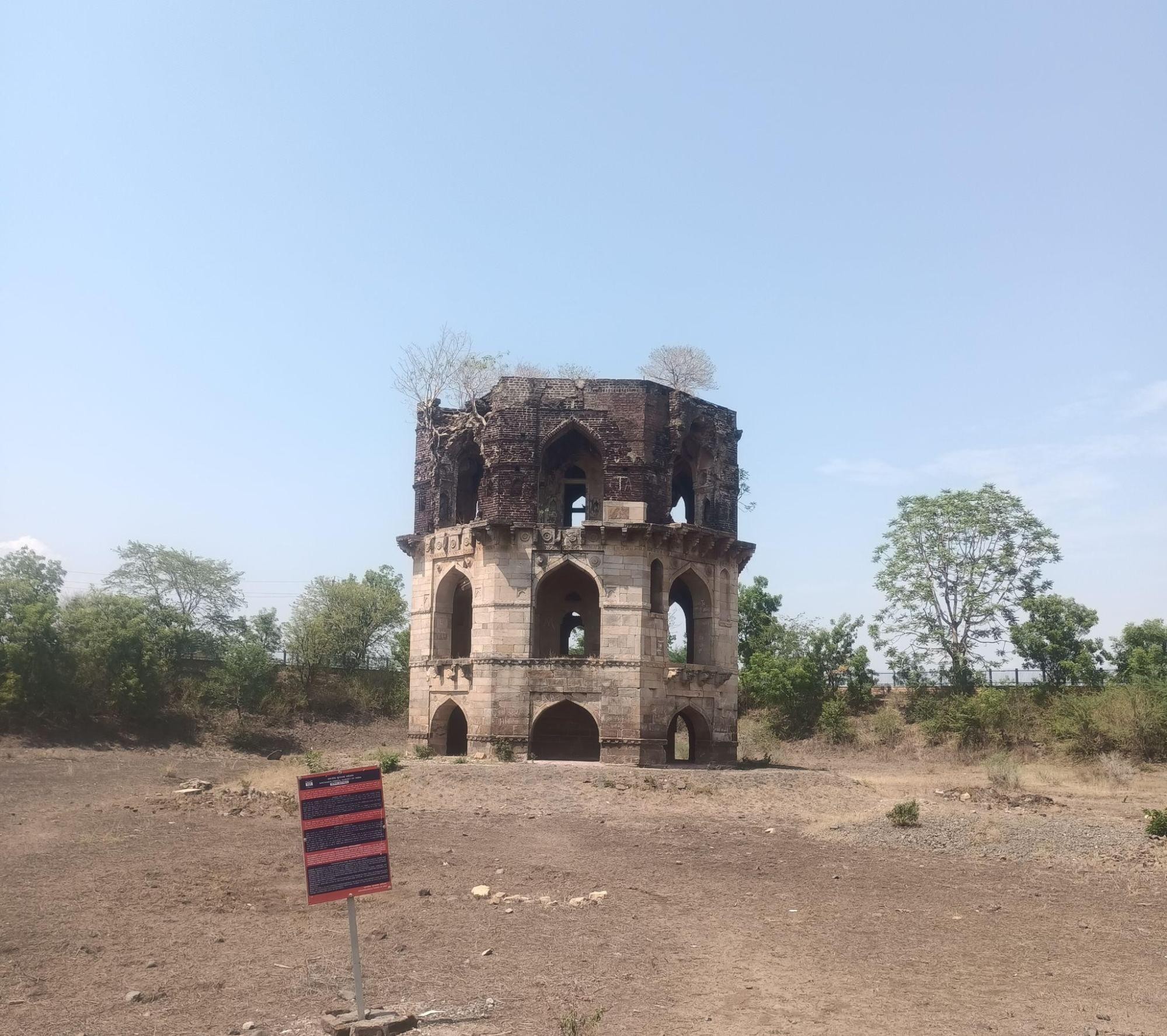

The design of the structure is said to resemble the johads (public water tanks) of Rajasthan. Notably, the tower possesses an unusual design where stairs connect only the second and third floors, but not the first and second floors. This unusual setup of the Hauj Katora might have been deliberately crafted. Fascinatingly, Dr. Vaibhav Mhaske suggests in an ETV Marathi interview that the site functioned as a ‘nauka vihar’ (yachting center) in the past. According to him, the Hauj Katora was a renowned yachting destination, which attracted visitors from across Western Maharashtra and even South India. Historically, water levels would have probably reached the first floor, allowing visitors to access the second floor directly by boat; which could explain its unusual design.


The site is currently protected by the Archaeological Survey of India (ASI). It is particularly said to be scenic during monsoon season and can be reached by rickshaw from Achalpur.
Hinglaj Devi Mandir
Hinglaj Devi Mandir (also referred to as Jwalamukhi Hinglajdevi Mandir) is a historic religious site located in Hinglaspur village, in the Nandgaon Khandeshwar taluka of Amravati district. The Mandir is dedicated to Hingla Devi, a form of Shakti, and is considered one of the sacred sites where the Devi is believed to have manifested after departing from her original seat in Hinglaj (present-day Balochistan). It is a significant yatra destination in the Vidarbha region, especially during Navratri.
![Entrance to the Hingla Devi Mandir at Hinglaspur, established following the goddess’s departure from her original seat in Hinglaj (now in Balochistan). The site gained regional importance in the early 14th century, when Chimanaji Sattaji Bhagat laid the foundations of its present structure and devotional practices.[1]](/media/culture/images/maharashtra/amravati/cultural-sites/entrance-to-the-hingla-devi-mandir-at_87i5fRH.png)
According to local tradition, Hinglaj Devi left her ancient seat (in Balochistan) and traveled in search of a true bhakt. It is said that dissatisfied with the devotion she received, the Devi appealed to Bhagwan Brahma, who advised her to go to Varhad (Vidarbha). There, she arrived at Akoli, a village in the Akola district, and entered the Satya Aranya forest, where the Rishi Amritgir Maharaj was meditating.
Amritgir Maharaj directed her to Chimanaji Sattaji Bhagat, an ardent bhakt known for his unwavering faith. Moved by his devotion, the Devi is believed to have blessed him. Chimanaji constructed three parkots (mandapa-like enclosures), including a large meeting hall, and created wells for the convenience of other devotees. These wells are said to fill naturally during the monsoon. The Mandir structure is said to have been completed by 1303 CE, and the surrounding village came to be known as Hinglajpur in her honour.
However, over time, due to what are described as impious acts by the people of Akoli, the Devi withdrew her presence from the village.
Following her departure from Akoli, the palkhi of the Devi is said to have miraculously arrived at the Hanuman Mandir in Hinglaspur village. It was here that her presence was re-established, and the Jwalamukhi Hinglajdevi Mandir was built. Since then, the site has been regarded as a unique and powerful center of worship in the region.
Jaisingh Baba Mandir
Jaisingh Baba Mandir is a religious site located in Pathrot. The mandir, established around 50 years ago, is dedicated to Sant Jaisingh Baba, a significant local spiritual figure who was born in Donad, Akola district.
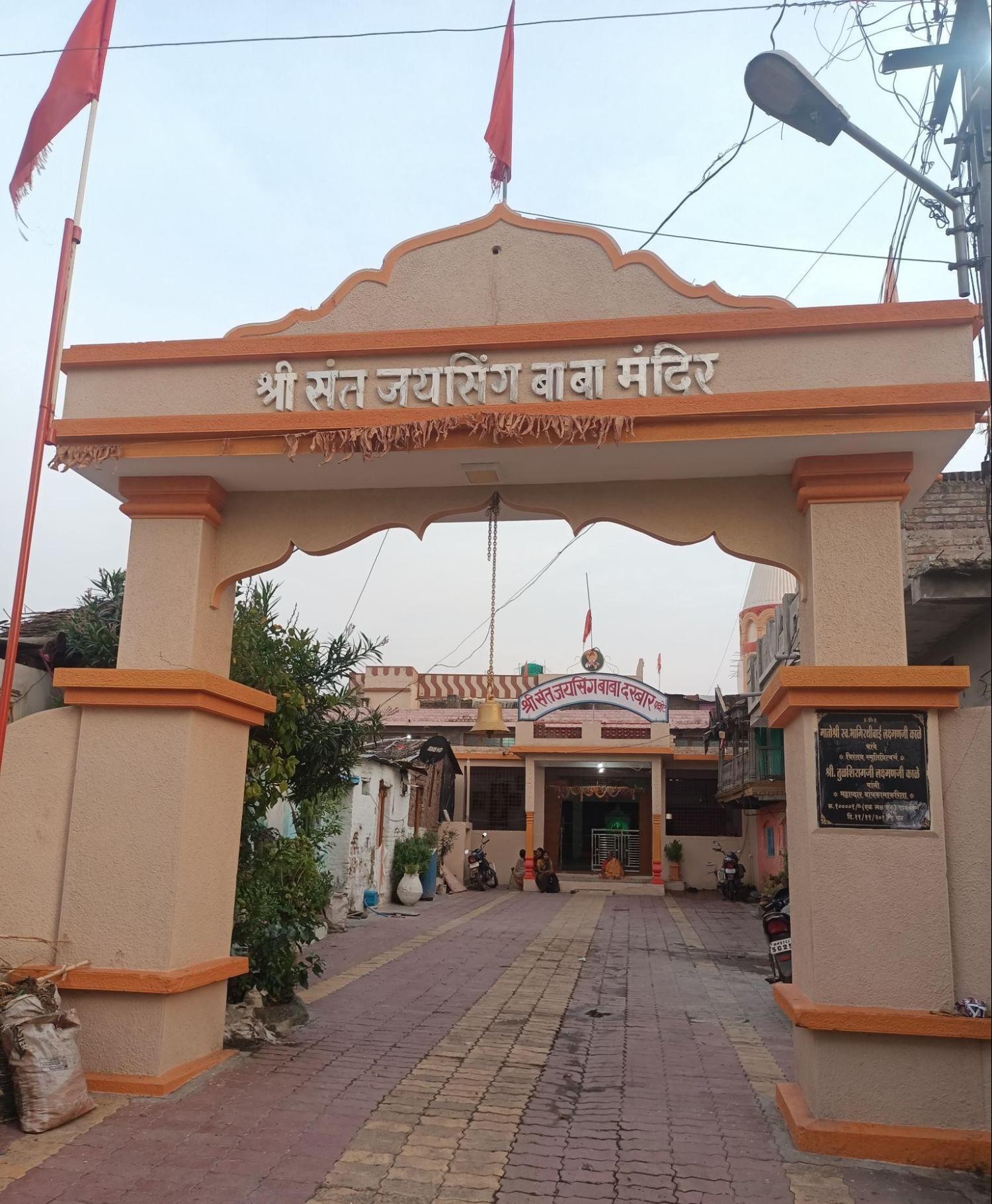
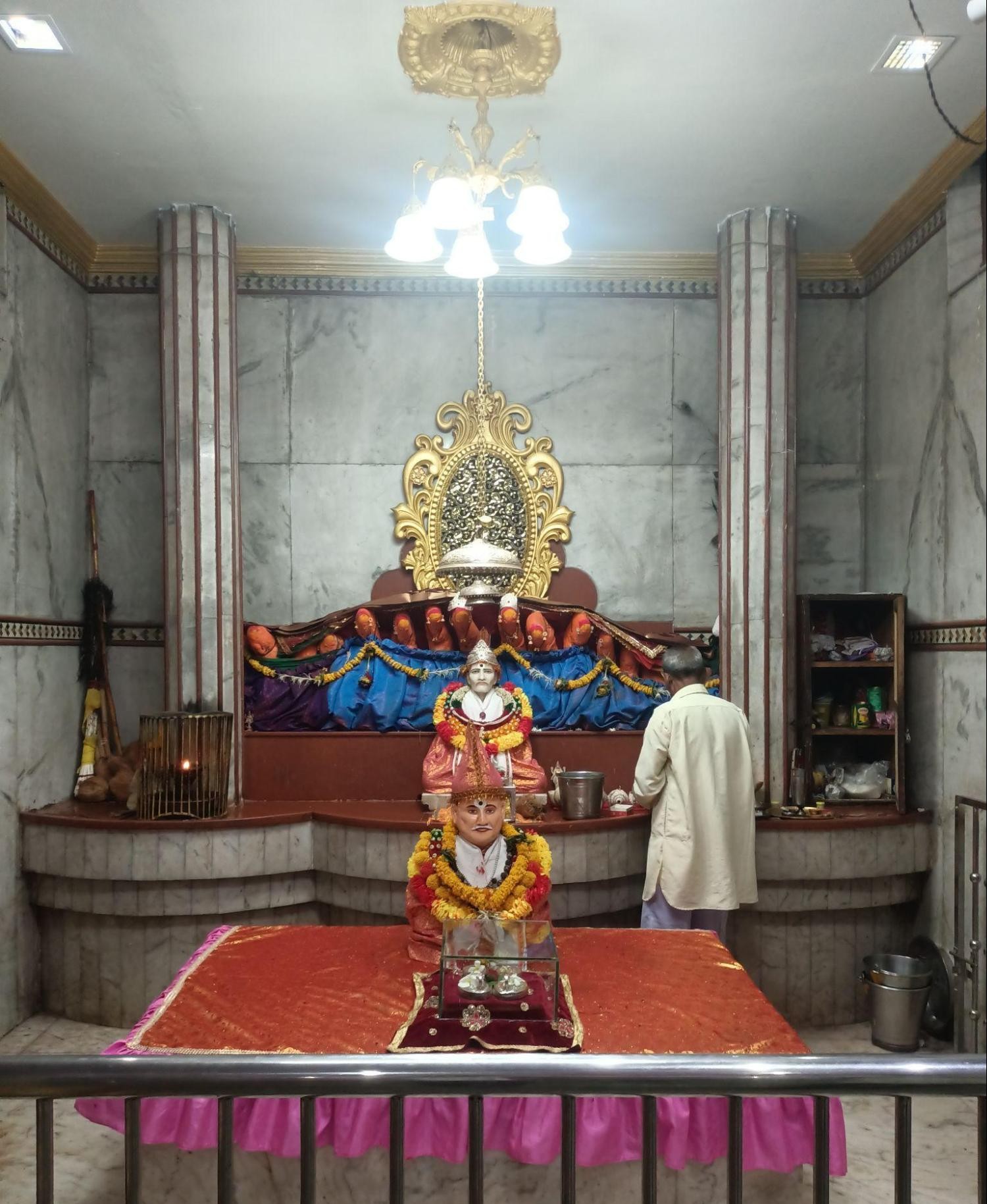
Sant Jaisingh Baba was known for his devotion to Devta Vitthal and spent much of his early years herding cattle and singing bhajans. According to a local lore, his life changed when he rescued a cow from a pond. The cow is believed to have been a manifestation of Devi Jagdamba Bhavani, who blessed him for his deed.
Following this blessing, according to the lore, Jaisingh Baba disappeared into the pond for over a decade. Upon his return, it is said that he possessed mystical powers and performed various miraculous acts. These included healing a diseased herd of goats and restoring life to a young woman on her wedding day. These feats contributed to his widespread reputation as a protector, spiritual guide, and healer.
Legacy and Modern Influence
The belief in Jaisingh Baba’s miraculous powers continues to be an integral part of local faith even today. During the COVID-19 pandemic, local residents attributed Pathrot’s low infection rates to Jaisingh Baba’s protective influence. It is said that he had placed a protective barrier around the town, shielding it from the disease.
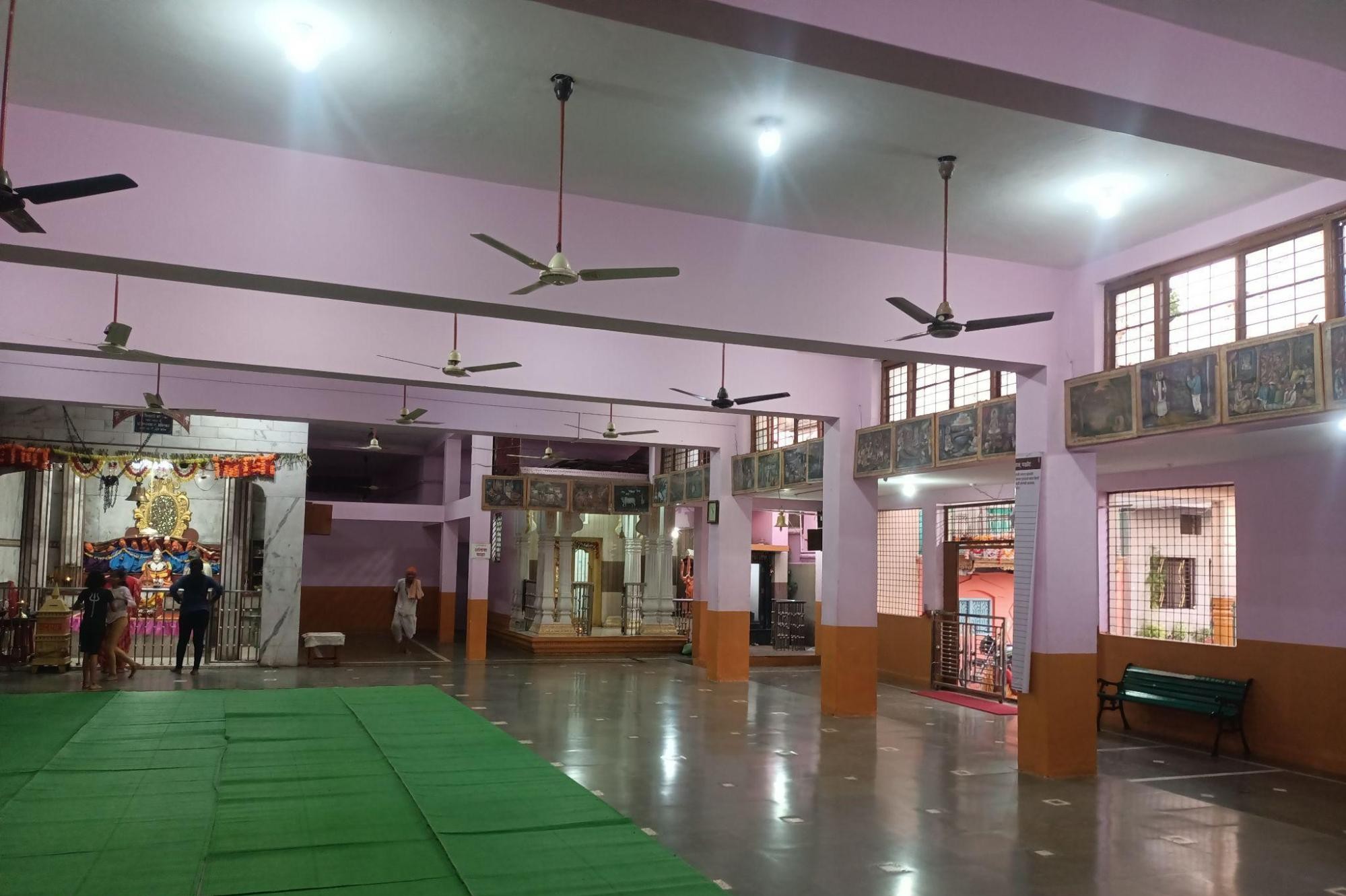
The mandir has become a popular yatra site recently. The mandir houses murtis of various devis and devtas and hosts many weekly bhajan sessions. Located just two minutes from the town bus stop, the temple is easily accessible and offers free entry for all.
Mahimapur Chi Vihir
Mahimapur Chi Vihir is a historic stepwell which lies in Mahimapur village of the Daryapur taluka. The stepwell is a six-storeyed structure which is connected by 88 steps. The structure is said to be around 100 ft. deep, with its entrance spanning 250 sq. ft. The influence of various dynasties can be seen in the stepwell’s design, such as the Yadavas, Bahamanis, and the Nizam Shahis.
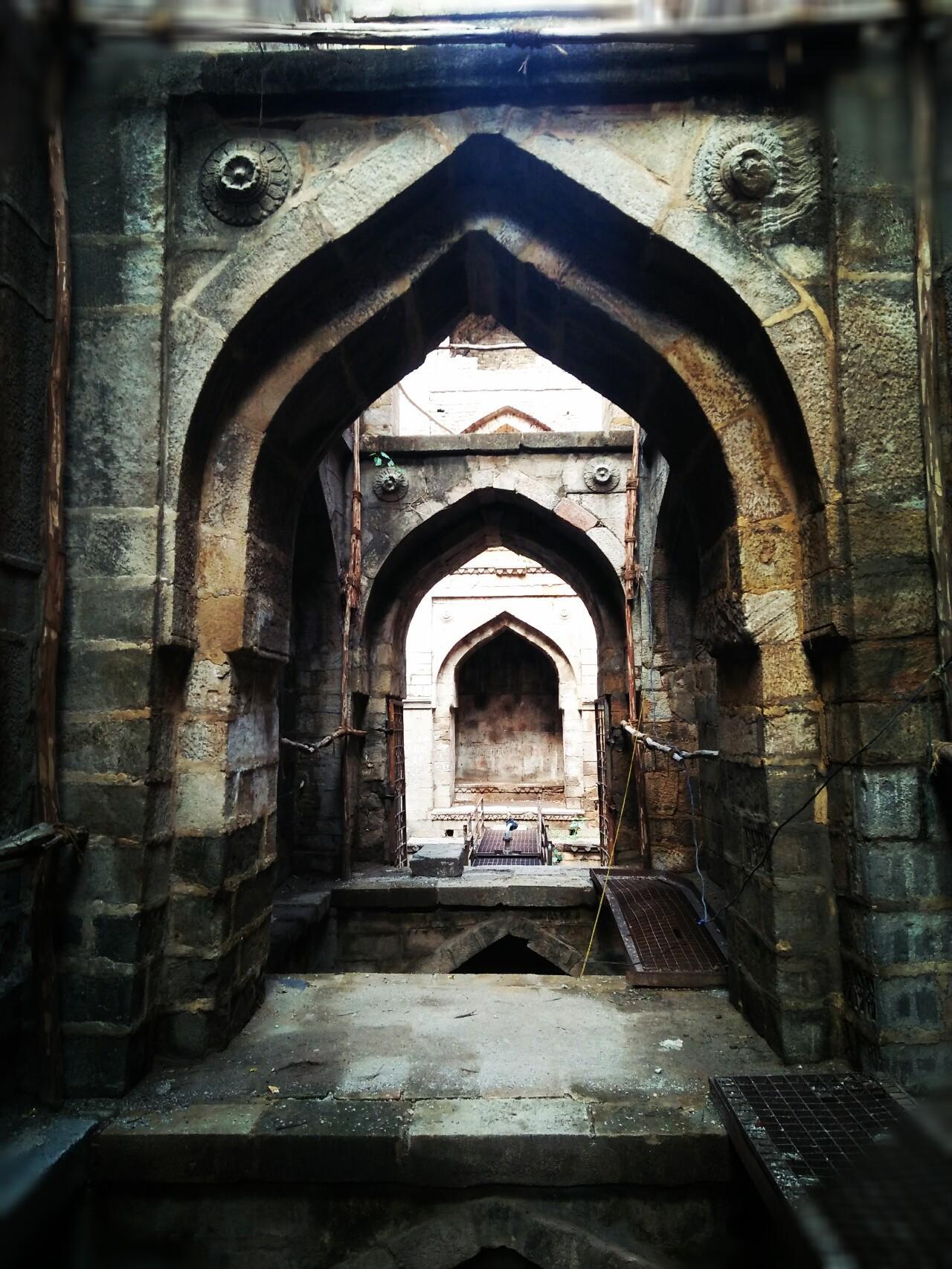

Each floor of the stepwell features stone arches. Interestingly, Dr. Jayant Wadatkar, a historian and YouTuber who has documented the site, says much of the structure is constructed primarily of colored stone. However, there are certain sections that are made up of a rare black stone which was likely sourced from Bahiram (a village that lies on the borders between Amravati and the Betul district of Madhya Pradesh).
A notable architectural feature of the stepwell is the resting area known as “Sopan,” which is positioned between the tenth and twelfth steps. The final nine steps are arranged in an ‘A’ shape and lead to a small mandir dedicated to Mahimamai; the devi after whom, as locals say, the village is named.
Cultural & Historical Significance
Archaeological excavations at the Mahimapur Chi Vihir have revealed artifacts, including pillars and a statue of Nandi, that are believed to date back to the Yadava period (r. early 12 CE-14th CE). These findings provide insight into the stepwell's age and suggest the presence of earlier structures at the site.
In addition to its archaeological value, the stepwell is also associated with numerous local stories and cultural memories. For years, according to locals, the well served as an important water source for the residents of the village. It was also home to a moss-like plant known as ‘Babar,’ which the villagers believed had medicinal properties and could cure ailments such as diarrhea and malaria. However, in recent years, both the well’s role as a primary water source and the presence of the Babar plant have waned.

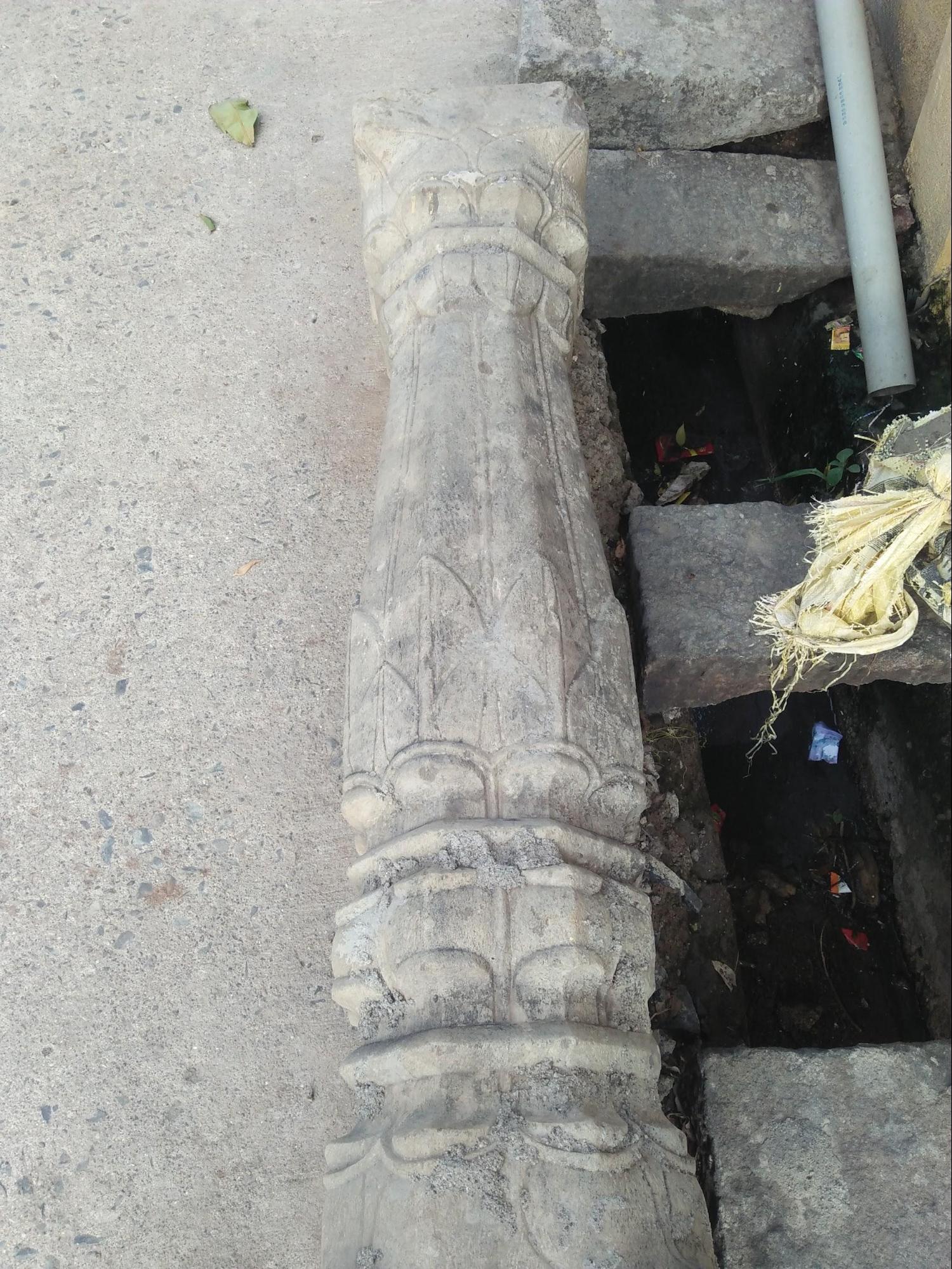
Locals attribute this change to the introduction of a new water supply scheme which came as the village expanded. As part of this scheme, which served Mahimapur and neighboring villages, they say, authorities added a disinfectant to treat the water. This, unfortunately, led to the gradual erasure of the Babar plant. The use of water from the well by the villagers similarly faded away. Older villagers recall that the well once had water flowing between two levels. However, over the last six years, the water level has dropped significantly. The surrounding area has since been repurposed, with living quarters built nearby.
Conservation Efforts
In recent years, the Mahimapur Chi Vihir has gained wider recognition. Before this, it was primarily a local landmark, known mostly to the villagers and those in surrounding areas. Around 2014, locals say, the Archaeology Department carried out restoration work to address damage from sediment buildup. In 2018, the well received renewed attention when local youth organized a community-driven initiative called ‘Shramdan,’ during which they cleared silt and debris; showcasing how some locals are actively contributing to the preservation of the site.
Mandal Shah
Mandal Shah is a historic stepwell complex situated on the outskirts of Achalpur. Interestingly, the origins of the stepwell are attributed to a very unconventional event.

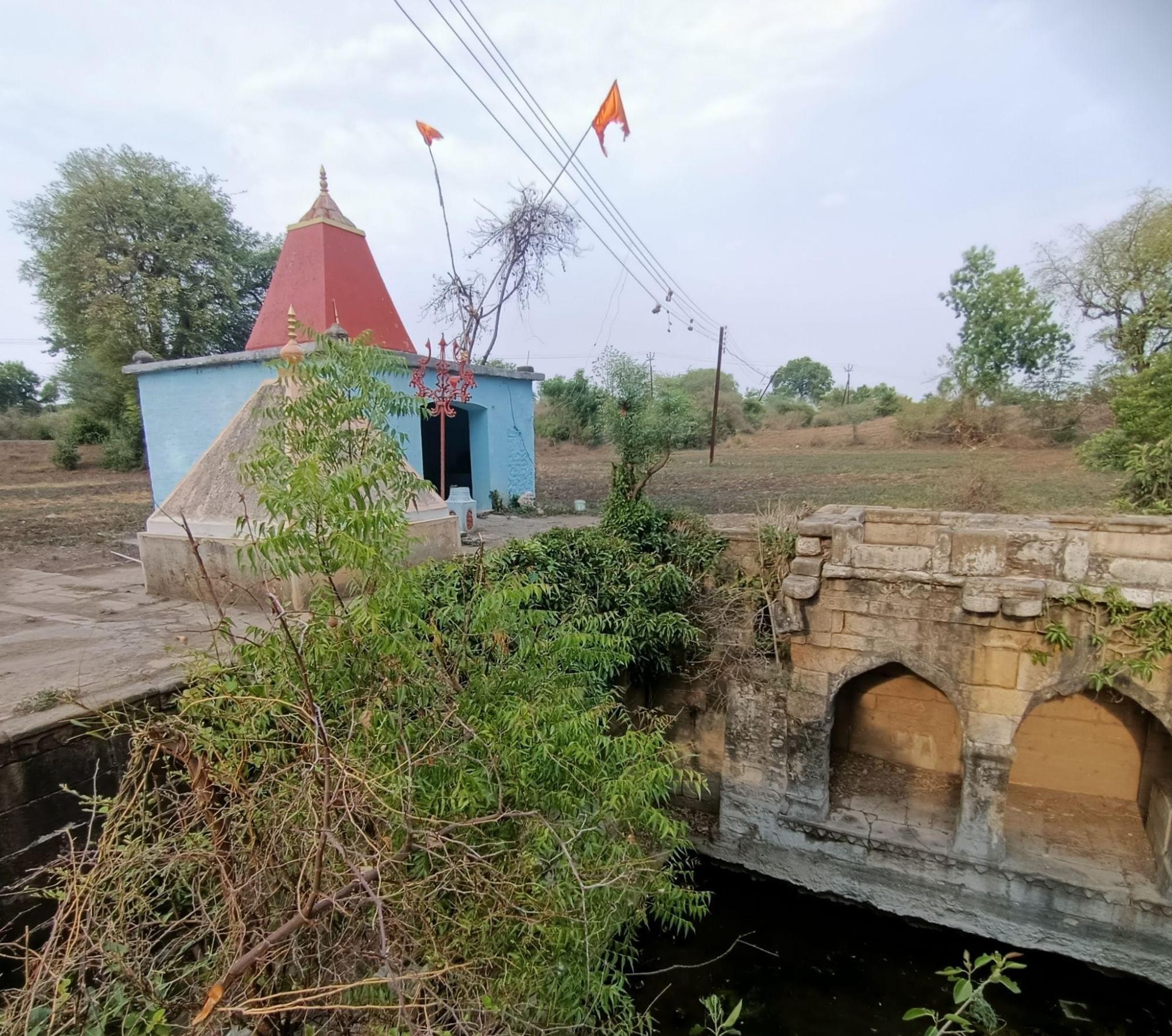
According to a local legend, a cannonball fired from the Gavilgarh fort, which is located approximately 90 km away is said to have struck the top of a nearby dargah. The fall of the debris is said to have been so huge that it created a deep hollow in the ground. It is believed that over time, water filled this hollow, and locals have transformed it into the stepwell that stands today.
Over time, the site’s significance grew with the establishment of two nearby mandirs dedicated to Hanuman and Datta. Though originally known for its Mandaleshwar Hanuman Mandir, the entire area, alongside the stepwell and the mandir gradually came to be called “Mandal Shah.” Fascinatingly, nearby this site lies what locals say is the Samadhi of Raja Mansingh of Amer in Rajasthan, who was a commander in Emperor Akbar’s army.
Ram Mandir Sansthan
The Ram Mandir Sansthan in Achalpur’s Bundelpura locality is an 80-year-old mandir dedicated to Bhagwan Ram. Its wooden structure, locals remark, make it stand out from other mandir’s that lie within the area.
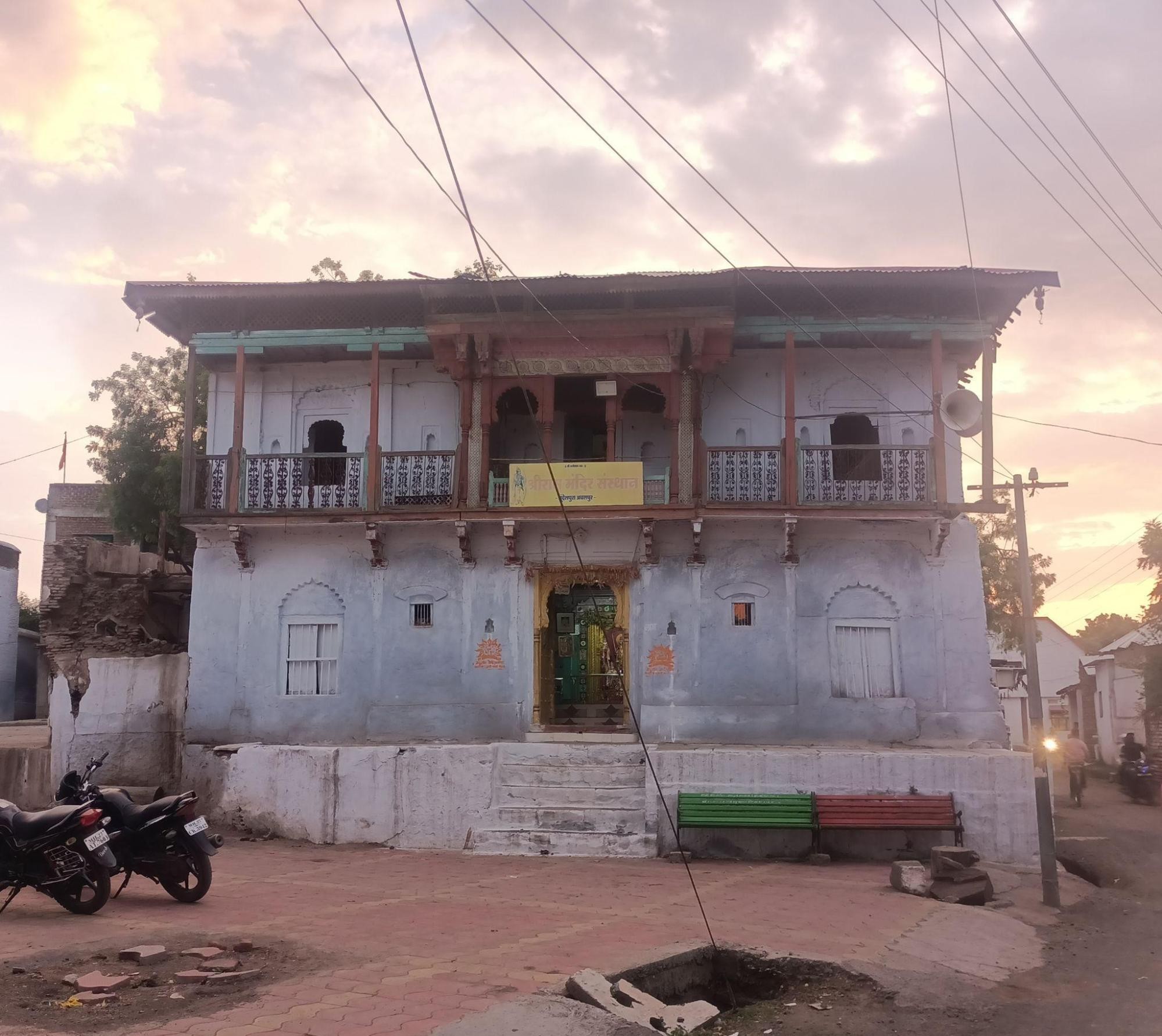
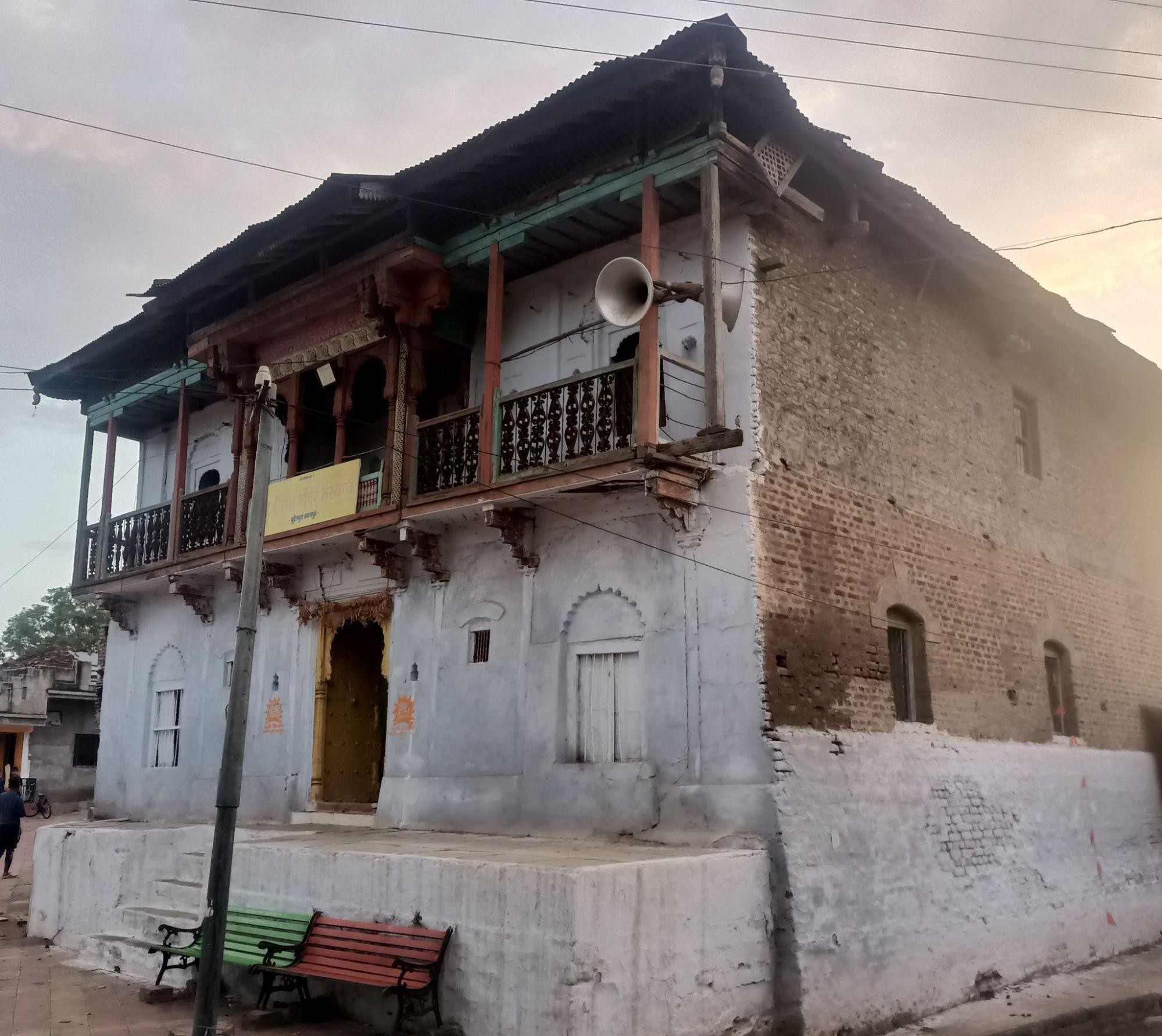
Each year, between Navratri and Dussehra, the sanstha of the mandir organizes a grand procession. Decorated rathas (chariots) carry the murtis of Bhagwan Ram, Sita, Lakshman, Hanuman, and members of the Vanar Sena. These roles are notably played by the children, aged 10 to 15, who live within the vicinity. The procession, locals say, which moves through the locality, attracts many visitors.

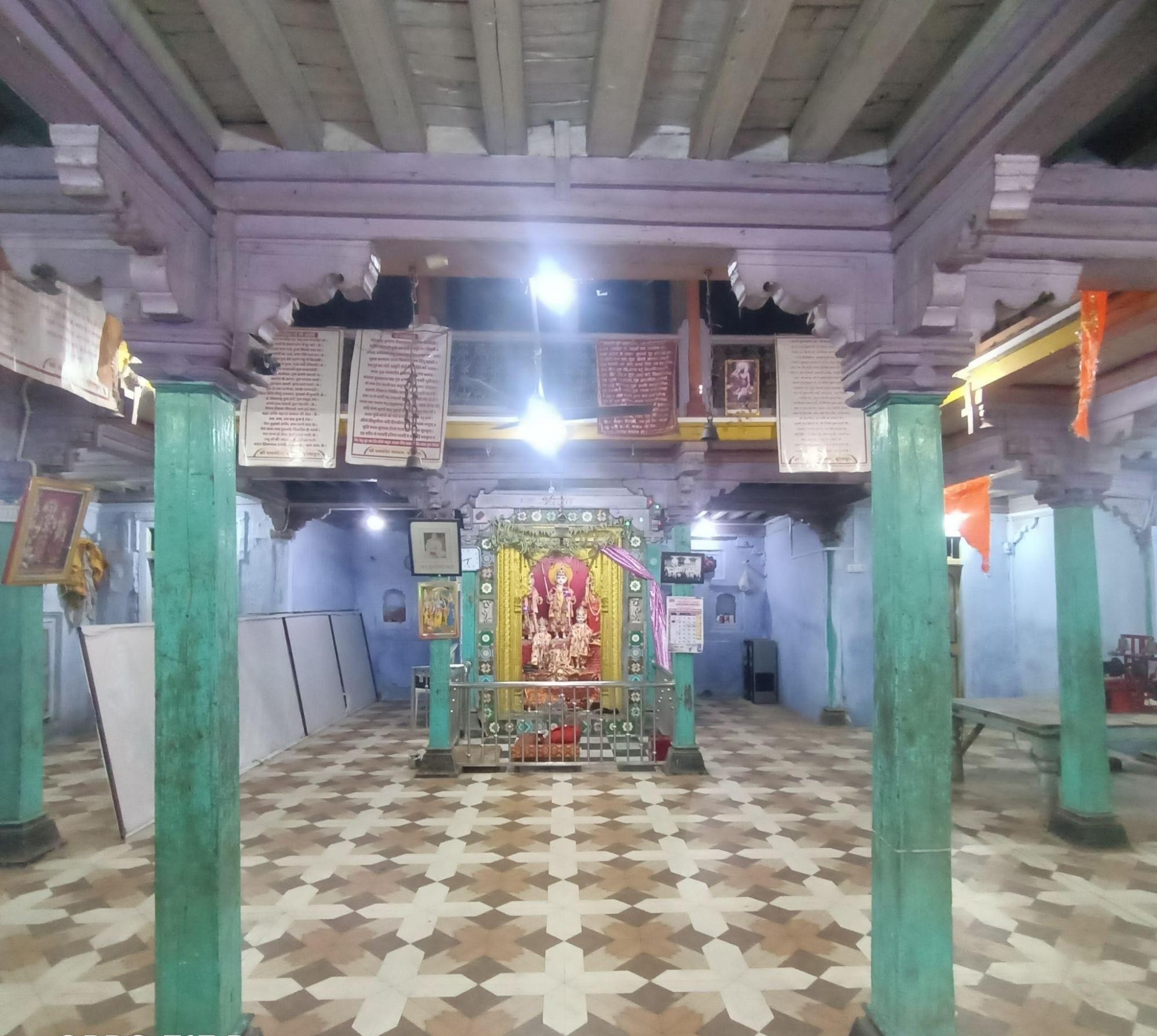
Adjacent to the Ram Mandir lies the Trimbakeshwar Shiv Mandir, which has its own fascinating history. It is said that during the reign of the Mughal Emperor Aurangzeb, many Shivlings of many mandir’s were defaced. This mandir is believed by locals to be one of them. However, when the Shivling here was damaged, carvings of Brahma, Vishnu, and Mahesh were uncovered beneath it. For the locals, this discovery deepened their reverence for the site.
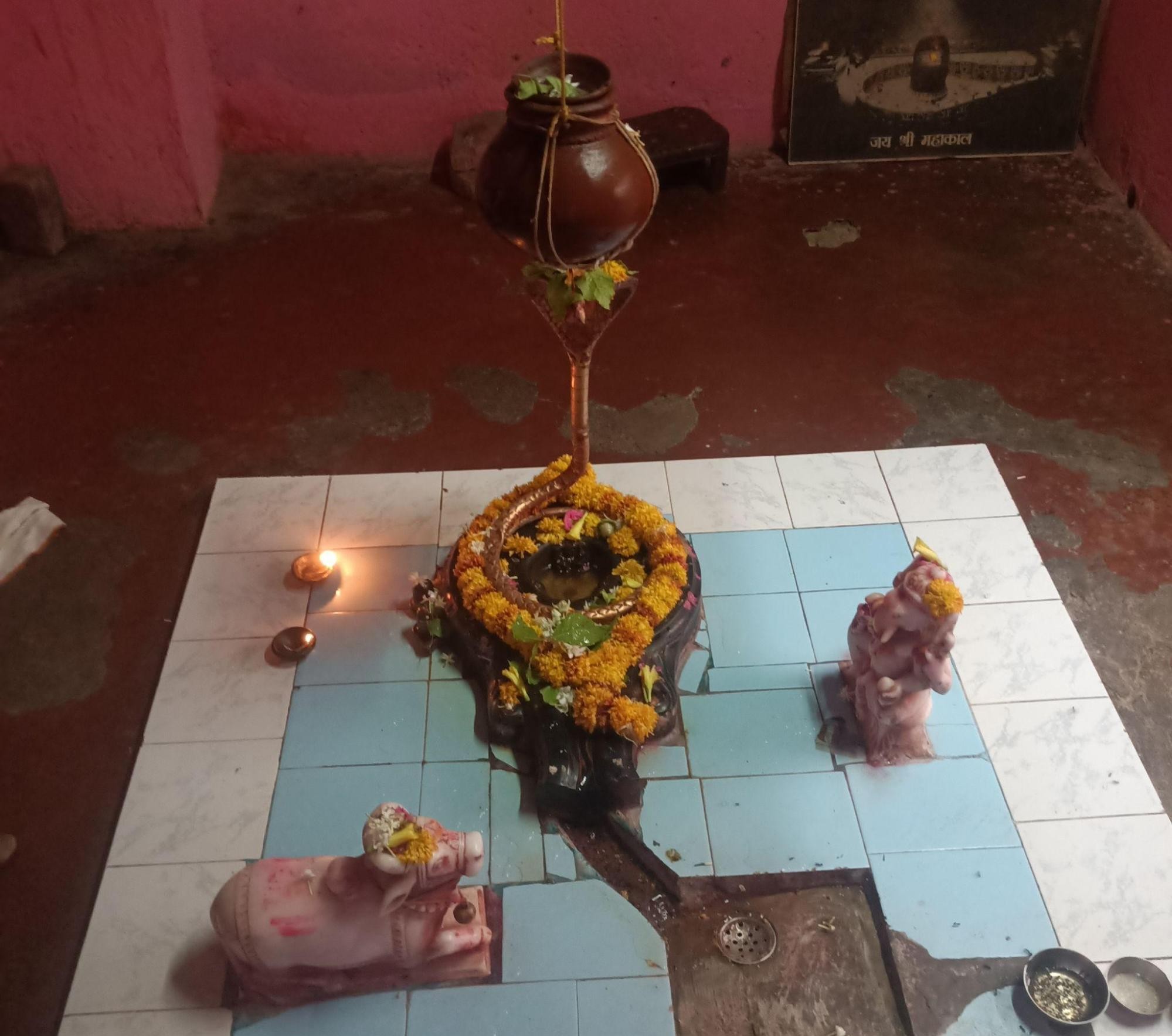
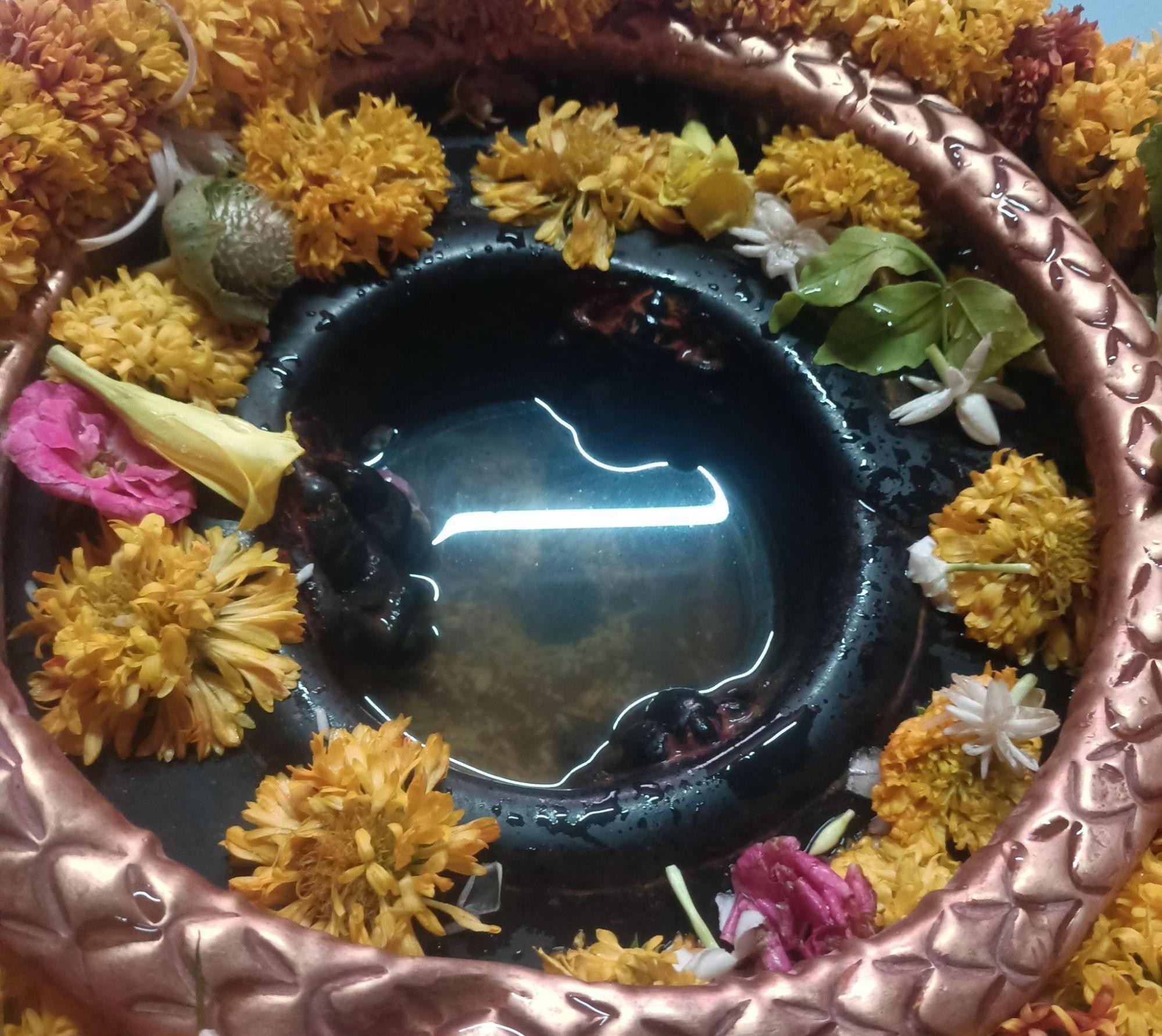
Sant Gadge Baba Samadhi Mandir
The Sant Gadge Maharaj Mandir is a prominent yatra site and social service centre situated in Amravati City. The mandir is managed by the Gadge Baba Trust and is dedicated to Sant Gadge Baba (1876-1956), a prominent social reformer and spiritual leader.
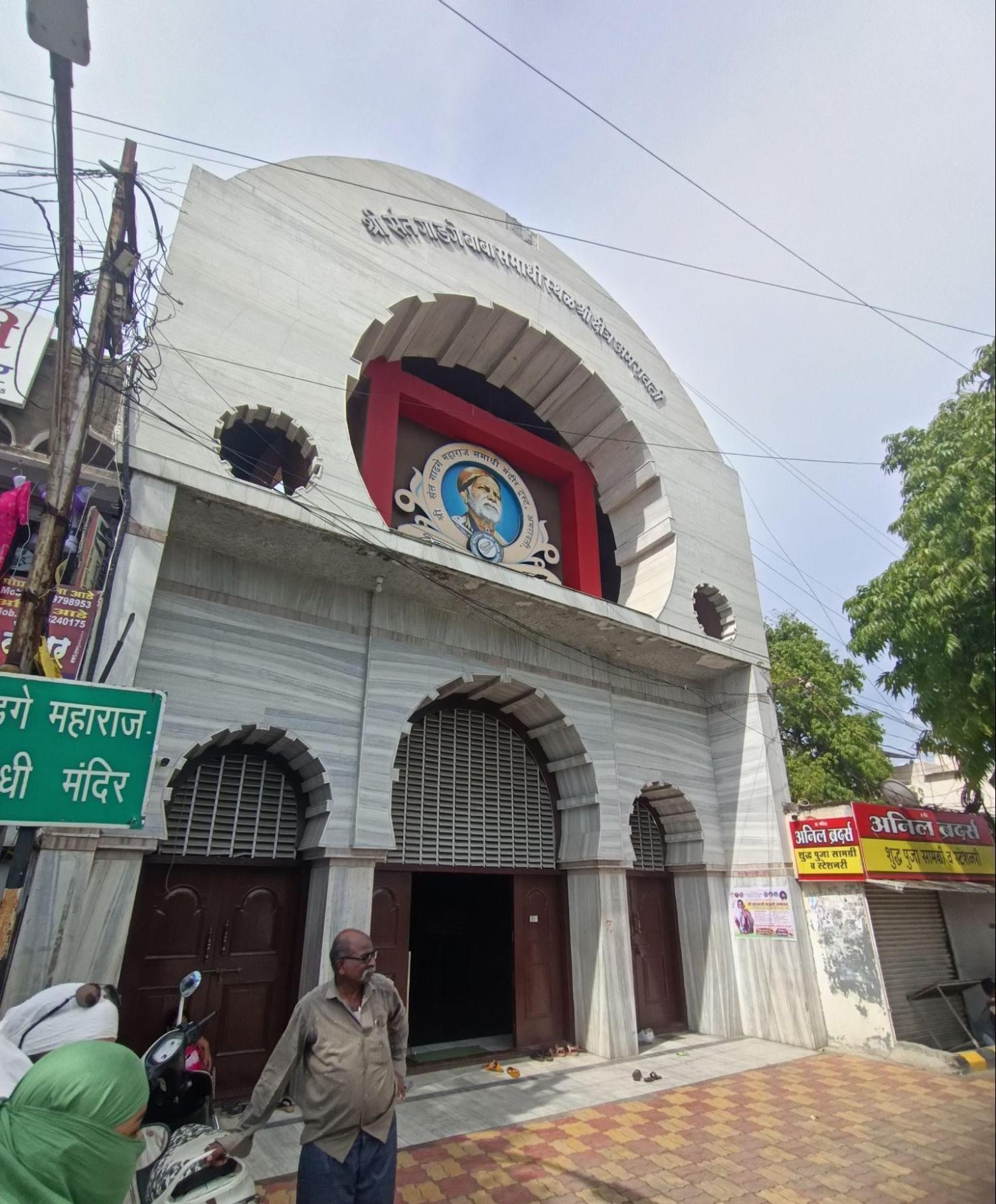
Sant Gadge Maharaj was born in a small village called Shedgaon which lies within the Amravati district. He was born into a Parit (washermen) family. His father, Zhingraji Janorkar, passed away in 1884 when Debuji was eight years old. Following his father’s death, his mother Shakubai relocated to Dapure village near Murtijapur Taluka, Akola district, where her brother Chandrabhanji resided.
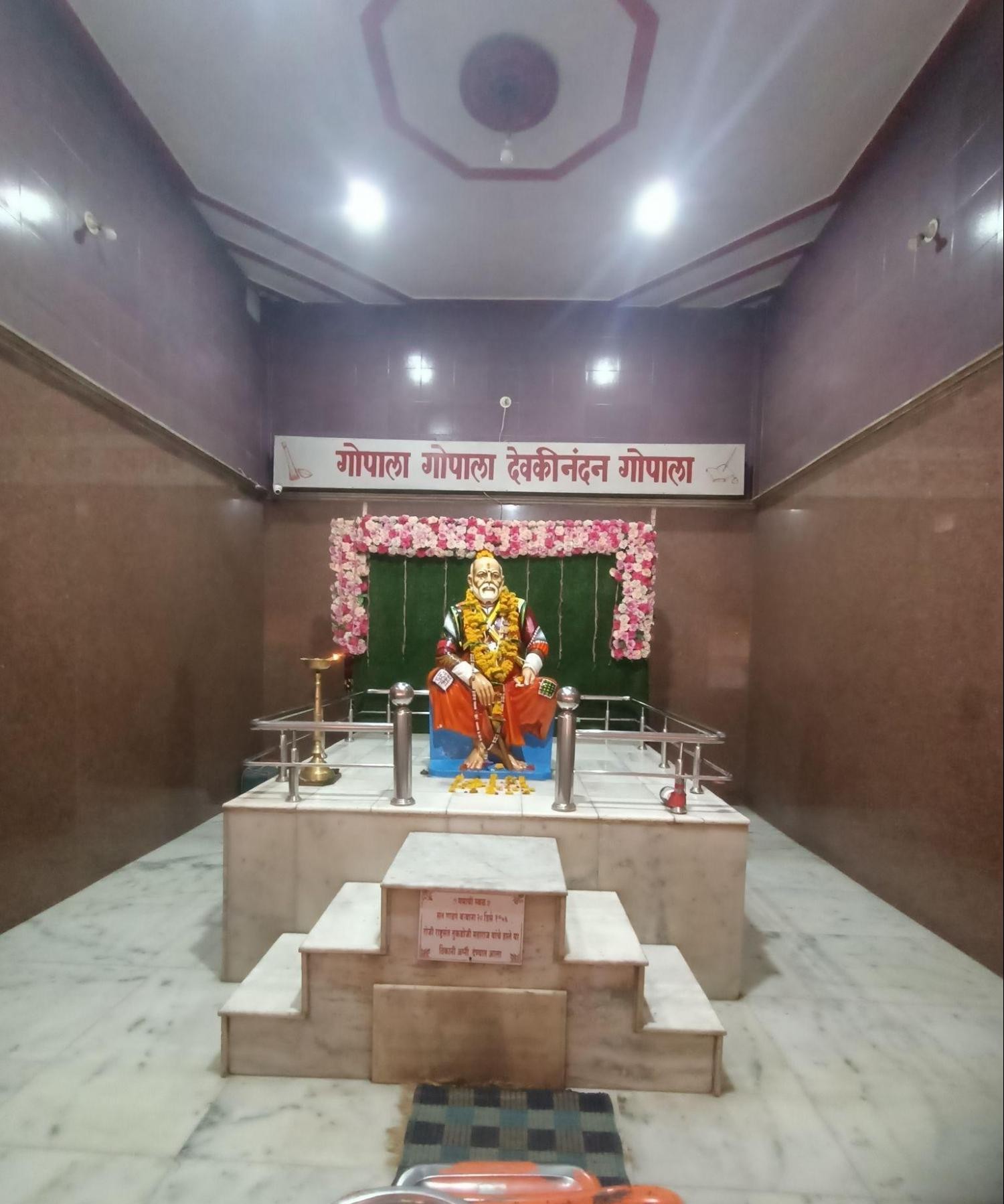
In 1905, at the age of 29, Debuji left his home to pursue a life dedicated to social welfare. From 1905 to 1917, he traveled extensively throughout India, interacting with people from various communities and developing his understanding of social issues. His approach to service was distinctive in many ways. It is said that he carried an upturned food pan on his head and a broom as his trademark symbol.
His method typically began with cleaning the dirtiest areas of villages he visited, often without revealing his identity. Many point out that, the Swachh Bharat Abhiyan (Clean India Campaign) of 2014 carries the many values he propagated and the cleanliness drives he carried out. Notably, prior to 2014, the Government of Maharashtra had also initiated a program called, ‘Sant Gadge Baba Gram Swachhata Abhiyan,’ in his honor. The program recognized and rewarded villagers for maintaining cleanliness and sanitation in their villages.
Gadge Baba would conduct evening discourses through the medium of Kirtans (a narrative monologue that is usually related to religious and spiritual teachings), during which he addressed various social issues such as untouchability, cleanliness, education, and more. He once infamously said, “instead of offering fragrant flowers to idols of gods, offer your blood for the service of the people around you. If you feed a hungry man, your life will become meaningful.”
His message drew many followers, including well-known figures such as Dr. B.R. Ambedkar and Acharya Atre. Across Maharashtra, Gadge Baba built dharamshalas (rest houses), Gorakshan centers (cow protection centers), and food donation centers for the poor, the elderly, and Dalits.
Today, the mandir, in many ways, carries on his legacy of service. Food and medical services are offered free of charge or at subsidized rates on certain days. The mandir’s trust provides facilities for social functions, including wedding ceremonies at no cost for economically disadvantaged families. Local residents often participate in various community service programs organized by the mandir’s trust.
Shri Adinath Swami Digambar Jain Atishaya Kshetra
Shri Adinath Swami Digambar Jain Atishaya Kshetra, though a relatively recent establishment, stands as a significant religious site in Bhatkuli. The mandir houses a murti of Bhagwan Adinath (the first Tirthankar of the third era of Jainism time cycle), which is believed to be over 3,000 years, making it a revered destination for many devotees.
![Shri Adinath Swami Digambar Jain Atishaya Kshetra.[2]](/media/culture/images/maharashtra/amravati/cultural-sites/shri-adinath-swami-digambar-jain-atis_i0qoMDJ.png)
Bhatkuli is a town that has deep historical connections. Notably, the town is linked to the story of Rukmini's elopement with Krishna and the subsequent events involving her brother, King Rukmi. According to the district colonial Gazetteer (1911), following the elopement of Rukmini with Krishna, her brother, King Rukmi, sought refuge in this region.
It is believed that while residing in the region, King Rukmi installed a black stone murti (statue) of Bhagwan Adinath within the town. In the 12th century, it is said that local authorities concealed the murti underground to protect it from potential desecration during periods of conflict. The artifact remained hidden, with its exact location unknown for generations.
In the late 18th century, the murti was rediscovered through a series of events deeply rooted in local folklore. According to village accounts, the village chief of Bhatkuli experienced a dream in which Bhagwan Adinath revealed the murti’s location. Acting on this vision, the villagers conducted a search, and the idol was unearthed exactly as described in the dream.
The rediscovery attracted the attention of Poojya Acharya Shri Nemsagarji Maharaj, an influential Jain monk. His authentication of the murti's legitimacy led to the construction of the present temple, which houses the murti. The temple has since become a significant tirth yatra site, to the extent that the town is now often referred to as “Bhatkuli Jain.”
Shri Jagdamba Devi Mandir
Shri Jagdamba Devi Mandir is situated in the Anjangaon Surji taluka of Melghat. The mandir dedicated to Devi Jagdamba (known locally as Murha Devi) holds much significance for the indigenous communities of the region and is distinguished by its women-only ritual practices.
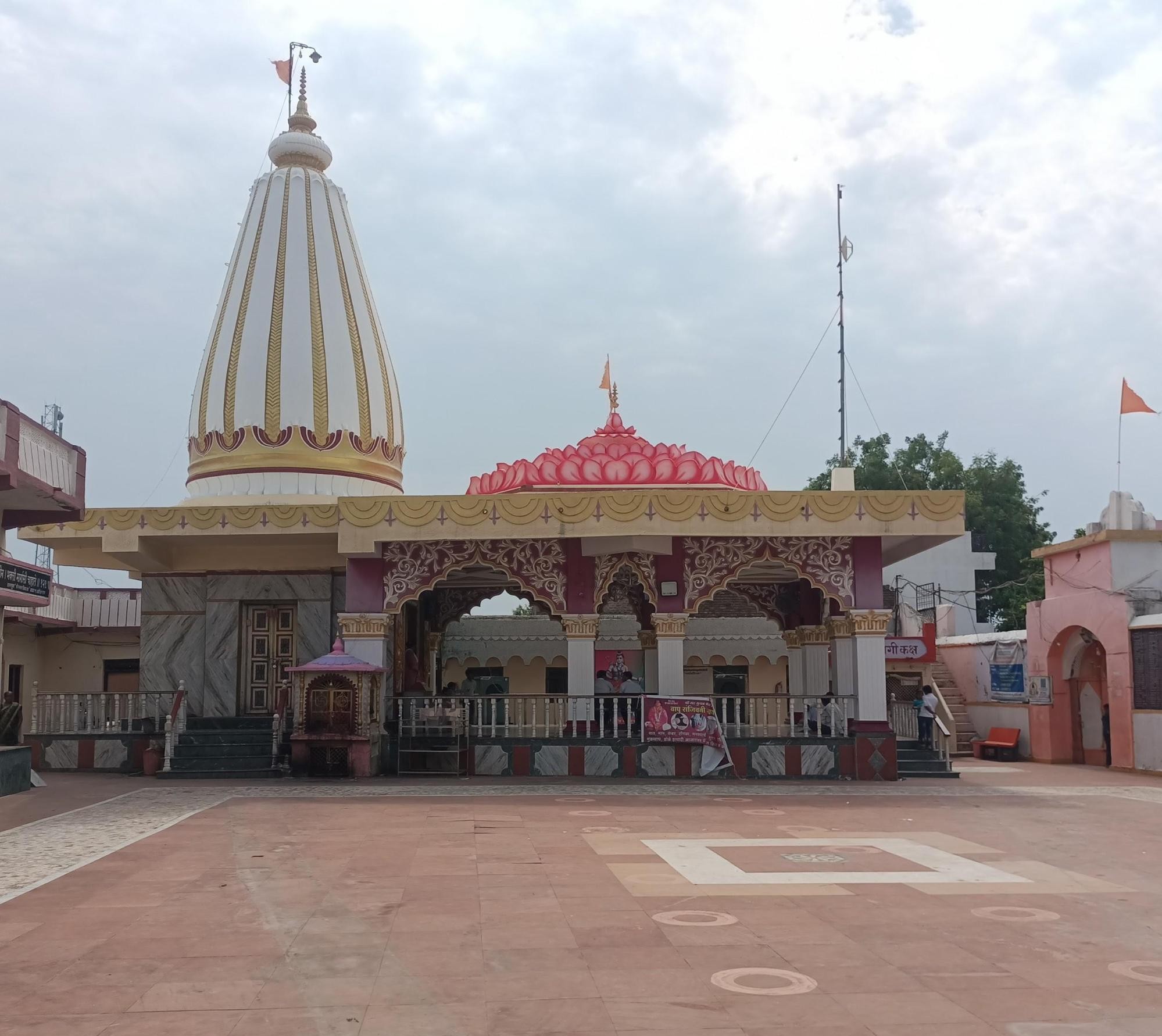
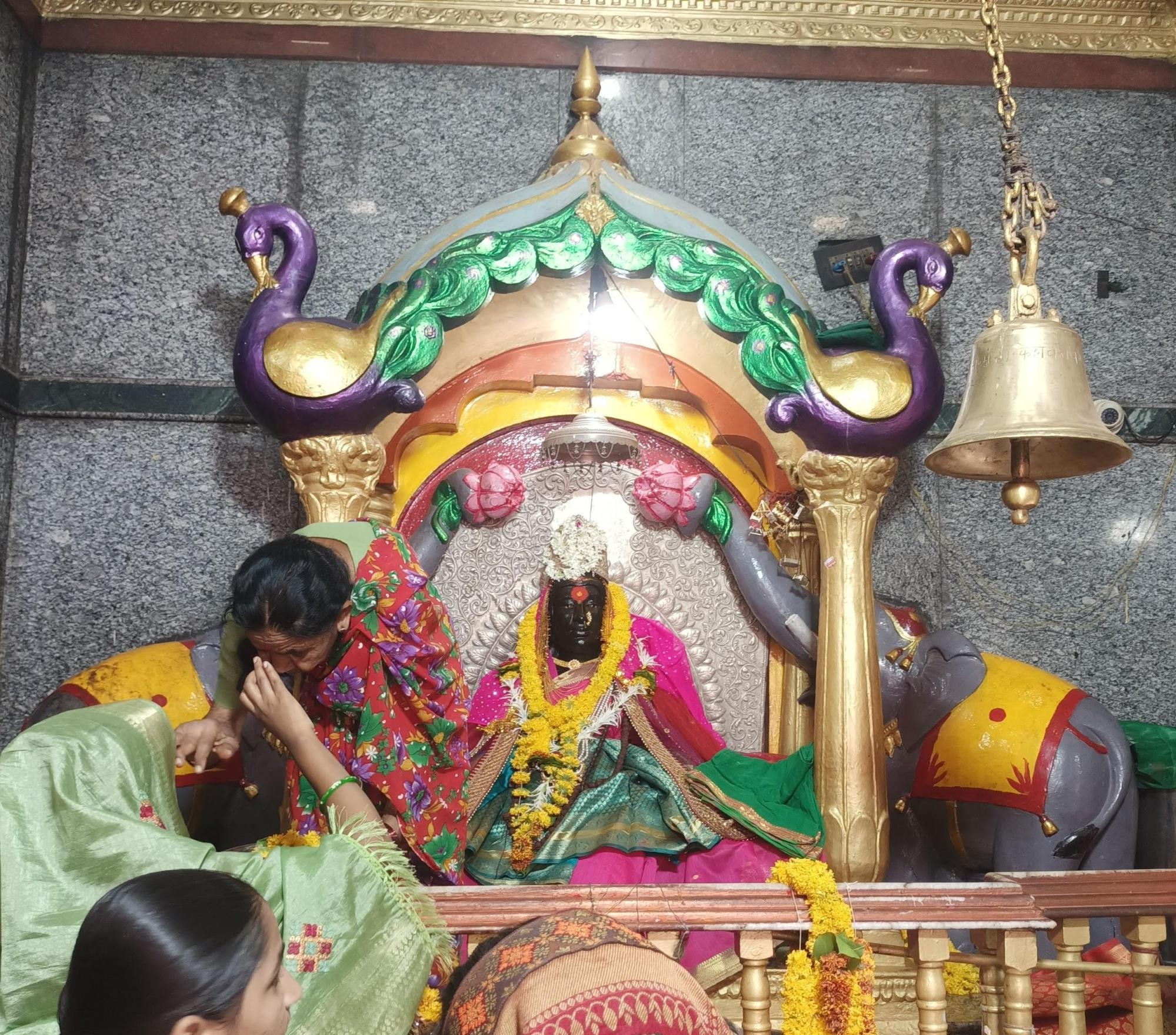
The murti of the mandir is believed to be swayambhu and is said to be nearly 800 years old. The story behind the mandir is rooted in a powerful local legend. Long ago, the people of Melghat would travel through tough mountain terrains to Mahur (Nanded) to worship Jagdamba Devi, who they believed resided there in the form of Renuka Devi. The journey was hard and long, but their devotion never wavered.
Moved by the devotion of her followers, Devi Jagdamba appeared at the foot of the Satpura hills in the form of Murha Devi, offering her blessings to the people of Melghat. The mandir became a sacred space for the villagers, who no longer needed to travel far to pay homage to the devi.
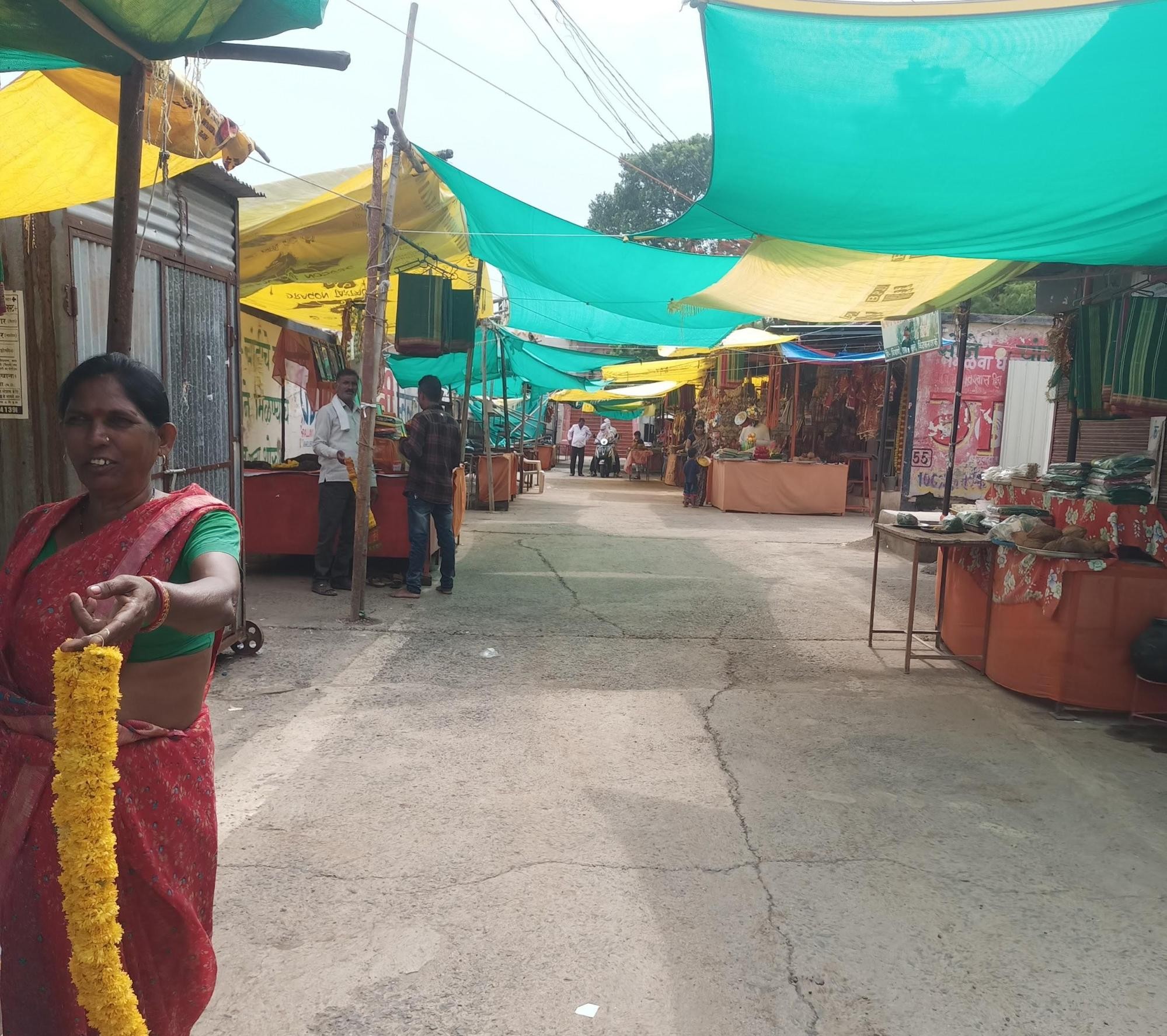
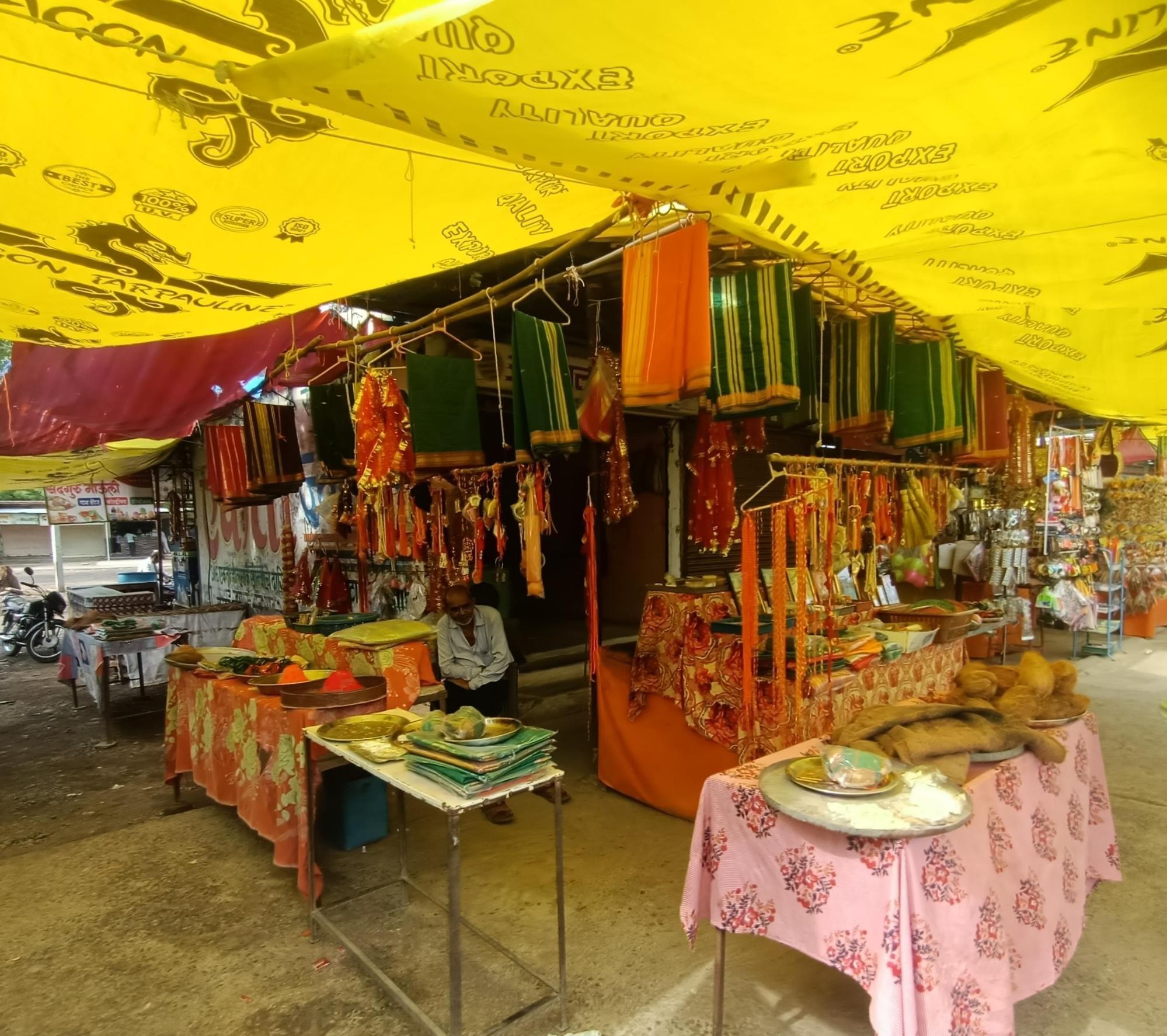
In recent years, the mandir has gained attention, especially for its Murha Yatra (a procession) that is usually held during Diwali and Navratri. It attracts large crowds of devotees and has contributed to the mandir’s recognition as a significant religious site in the region.
Sources
Chikhaldara Club. Astamasiddhi Mandir. Chikhaldara Club. Accessed March 17, 2025.https://chikhaldara.club/astamasiddhi-mandir/
Dr. Anil Yadavrao Gaikwad. Sant Gadge Baba’s Contributions. Issuu. Accessed March 17, 2025.
ETV Bharat. 2024. 500-Year-Old Historic Hauz Katora Building in Achalpur, Amravati. ETV Bharat. Accessed March 17, 2025.https://www.etvbharat.com/mr/!state/500-year…
Explore with Dr. Jayant Wadatkar. 2018.Mahimapur Step Well.Youtubehttps://www.youtube.com/watch?v=bhuRks0Vc2Q
Incredible India. Gawligadh Fort. Incredible India. Accessed March 17, 2025.https://www.incredibleindia.gov.in/en/mahara…
Kisari Mohan Ganguli. 1896 (2020). The Mahabharata of Krishna-Dwaipayana Vyasa.https://archive.org/details/the-mahabharata-…
Maharashtra State Gazetteers.1911(reprinted in 1983). Amravati District. Directorate of Government Printing, Stationary & Publications, Government of Maharashtra, Mumbai.
Ministry of Culture. 2023-24. Gavilgad fort and Second Anglo-Maratha War. Digital District Repository Detail. Accessed March 17, 2025.
Ministry Of Tourism. Sant Gadge Maharaj Amravati Utsav. Utsav. Accessed March 17, 2025.https://utsav.gov.in/view-event/sant-gadge-m…
Sudheendra Kulkarni. 2024. An Icon for Swachh Bharat. The Indian Express. Accessed March 17, 2025.https://indianexpress.com/article/opinion/co…
Last updated on 5 November 2025. Help us improve the information on this page by clicking on suggest edits or writing to us.